Find out more about your health here from our health professionals!

Skin is the largest organ in our body. Not only that it functions as to protect our body from microbes and the elements, it also helps to regulate body temperature and permits the sensation of touch, heat and cold.
There are many factors influencing skin condition, but in this post, we are going to share on tips on how to make your skin glow!
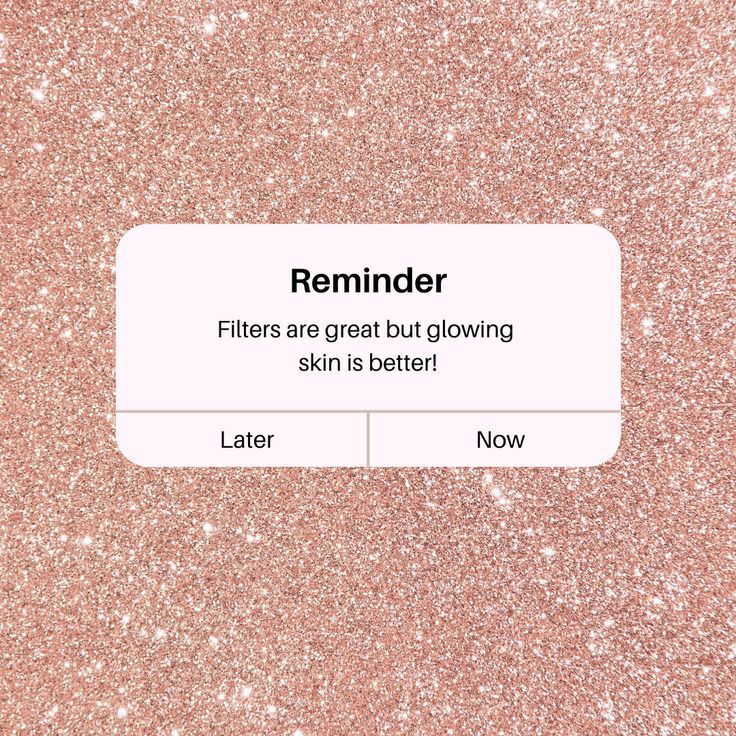
As much as smoking is bad to your lung so does it to your skin
Cigarette smoke contain many harmful substances to our body, as we know. However as for the skin, it releases carbon monoxide which displace oxygen in your skin and nicotine which reduce blood flow which will make skin dry and discolored. Smoking also triggers the destruction of collagen in the skin hence skin loss its elasticity and produce wrinkles and fine lines!
When you are younger and a smoker you cannot really see the difference but as you get older, the damage on your appearance will be obvious and you will be looking older as compared to your actual age (1).

Sunscreen is a must
Malaysia is a humid and warm country all year long; thus, wearing sunscreen is a must! Sunscreen helps protect skin from premature ageing like wrinkles, fine lines, and hyperpigmentation. Studies show that people who are under 55 years old and wear sunscreen regularly can lower their risk of premature ageing by 24% as compared to those who wear sunscreen occasionally or not at all.
If you are a newbie looking for sunscreen, look for sunscreen with at least SPF 30 (Sun Protecting Factor) and choose sunscreen according to your skin type, such as aqua sunscreen, which is meant for dry skin, etc. You also must apply sunscreen every 2 hours or after exercise. Sunscreen should also be applied at least 30 minutes before going out, as it requires time to be absorbed by the skin and activated in order to protect your skin (2).
Move, Move, Move
We know that exercising regularly can keep our bodies fit and healthy, but did you know that it can also keep your skin healthy?
Exercise increases blood circulation and flow throughout the body, hence making your skin radiant and glowing. Pssttt…you can kill twoi birds with one stone by doing this; you can keep your body lean while also getting healthy skin! (3)
Keep your body hydrated
Our skin is exposed to various conditions: cold due to the air conditioner, warm due to the water, etc., so drinking plenty of water will make our skin condition better. Everybody is born with a particular skin type, whether it is dry, oily, or a combination; however, all these surrounding factors and age factor can change skin condition as well (4, 5).
In order to see whether your skin is dry, try to pinch it in an area and see whether it has a wrinkle on it after your pinch or whether it bounces back after your pinch, which is an indicator for well-hydrated skin. Wrinkles and less bouncy skin are indicators of dry skin; it can also sometimes be seen based on your urine colour if it is too concentrated, meaning your body does not get a sufficient amount of water (4, 5).
Lifestyle changes can reverse this; drink at least 8 glasses of water per day. Limiting the intake of alcohol and drinking less caffeinated drinks like coffee and tea can improve the dry skin condition (4).
Face and manage your stress.
We used to believe that suppressing our feelings and emotions was better for everyone, including ourselves. However, that is not always the case; we have to deal with it and manage it. Talk to someone if you have a problem; share it with someone that you trust. Think positive.
Pick up some hobbies, distract yourself from overthinking about it, and slowly find solutions. Doing outdoor activities can help calm a person if their mind is too saturated with a lot of stuff, or spending time alone can de-clutter their mind and create more space. Cleaning can sometimes make you a lot happier and help you think better about the solution to your problem.
Established a skincare routine
Skin care is essential for keeping skin in good condition. A good skin care routine will improve skin condition, but only if the products used are of high quality.First, you have to find out your skin type. Normal skin, dry skin, oily skin, and combination skin are the four skin types.
To determine your skin type, start by washing your face and then waiting an hour. After it’s been an hour, dab your forehead and nose with a tissue and check to see if any oil has rubbed off. If it did, it’s a sign that you have oily skin. If there isn’t any oil but your face feels dry and tight, you may have dry skin (4,5).
Once you have figured out your skin type, find the right product for it. The common one should have cleanser, moisturizer, toner, sunscreen, exfoliator, and makeup removal. Start with cleansing your face at least twice per day. If you need to exfoliate your skin at least twice a week, this is a good time to remove all of the dead cells, dirt, and blemishes on your face (5).
Once you have done these, your skin is now ready to absorb all the good nutrients from your skincare, so now is the time for you to apply toner and moisturizer. Toner and moisturiser are good for hydrating the skin. After that, the skin is completely moisturized.You can now apply sunscreen.After sunscreen, it is time for you to wear makeup. If you are wearing make-up, make sure to thoroughly clean it at the end of the day using make-up removal and start your nighttime skin care routine as per daytime (5).
The only difference between a daytime and nighttime skincare routine is that moisturiser used on the skin is encouraged to be applied thickly at night so that the skin is not dry in the morning!
There are also people who want to give extra care and a boost to their skin; they can try to use serum. Serum is a product that is very concentrated with good vitamins for the skin, like vitamin A, C, and E. It’s usually used to fade scars or add more vitamins to the skin. However, the correct order of using skincare products is important; if not, skin cannot absorb the nutrients that the product has, and it will just go to waste (5).
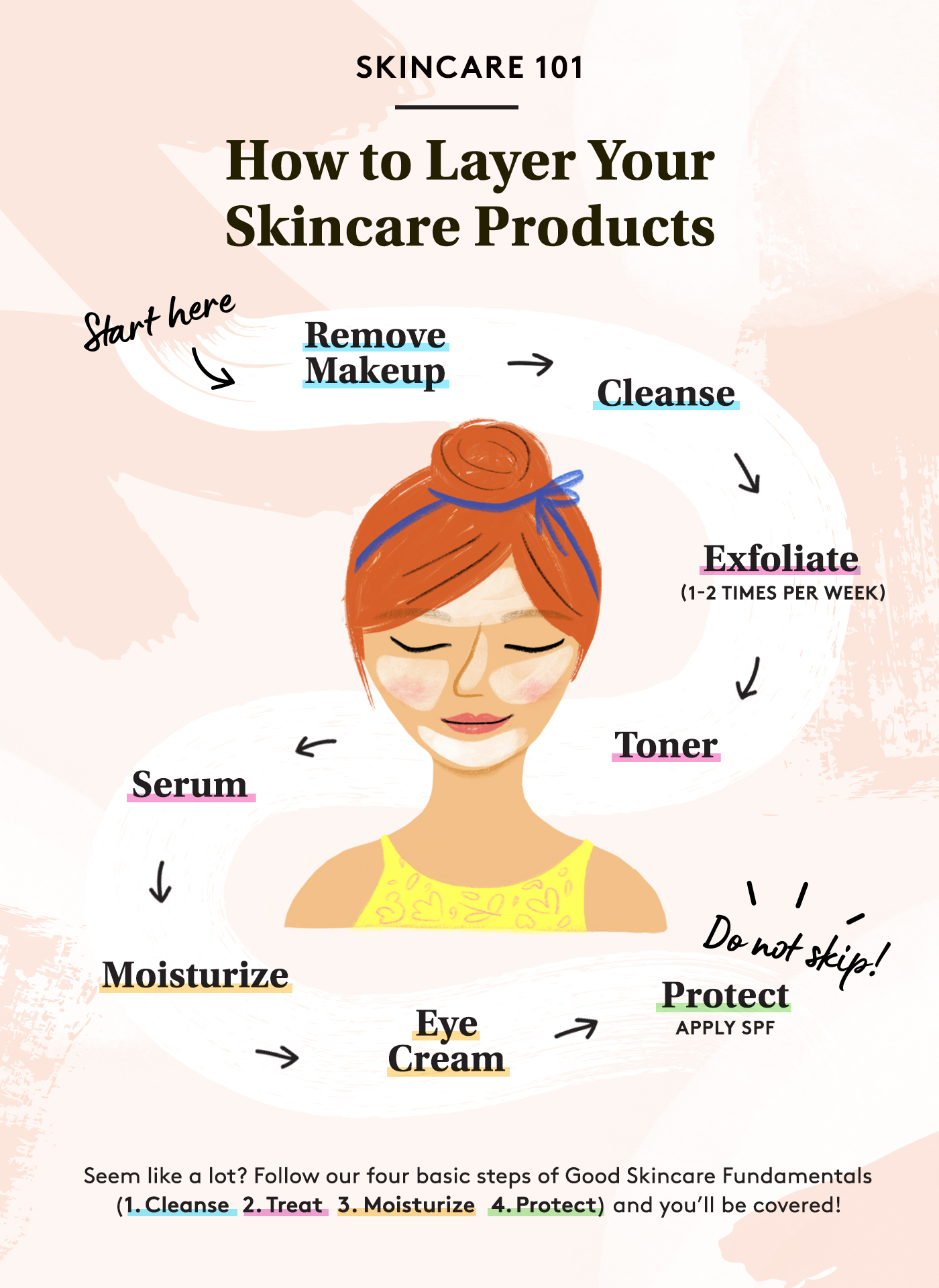
Diet vs skin condition
As much as sugary food is bad for your waistline, so is it for your skin! Acne and breakouts can be exacerbated by sugary foods.Sugar and foods high on the glycemic index (meaning foods that, once ingested, convert quickly into glucose and cause your body’s insulin levels to elevate) lead to a burst of inflammation that goes throughout your entire body (6).
Vitamin C
Vitamin C is a very common vitamin used to make skin become radiant and glow. Vitamin C-rich foods are often used to boost skin conditions. Fruits like guava are really rich with vitamin C; it even has twice the content of vitamin C in an orange!
However, if one is a picky eater, it is also best to actually consume a vitamin C supplement rather than apply it topically (topical application). On the market, there are many types of vitamin C supplements. Most of it has really high vitamin C content, such as 500 mg or 1000 mg. However, according to the RNI (recommended nutrient intake), our body only needs about 70 mg of vitamin C, so the higher dosage of the vitamin will just be excreted through urine.
On the supplement ingredients list, you can see whether the supplement is made from natural or synthetic ingredients.Synthetic vitamin C is called ascorbic acid; it usually irritates the stomach and has a higher dosage of vitamin C as compared to vitamin C that is derived from natural fruits like berries, guavas, oranges, etc.
Synthetic vitamin C or ascorbic acid is also usually coloured with food colouring to make the supplement look as if it has a high content of vitamin C. If you notice that your soluble vitamin C supplement stains your glass of water after being diluted in it, there is a high probability that the supplement that you are taking has food colouring in it.
So be wise in choosing your vitamin C supplements. In order to make your skin glow, know how to find good vitamin C. Remember, it has to be derived from a natural source with no coloring, and the content of the vitamin C does not need to be too high!
References

Breast cancer is the second leading cause of cancer deaths especially among women around the world. The development of breast cancer is a multi-step process involving multiple cell types, and its prevention remains challenging in the world. In general, breast cancer results from abnormal and uncontrolled division of the cells in the lobules (milk producing glands) or the ducts (11).
Breast cancer is the most common cancer affecting women in Malaysia. One in 19 women in Malaysia are at risk compared to one in eight in Europe and the United States. According to Malaysia Breast Cancer Foundation, female breast cancer cases reported 65% of women were between age of 40 to 60 years old whereas a total number of incidents with 59.7 Chinese women, 55.8 Indian women and 33.9 Malay women per 100,000 respectively. Unfortunately, 40% of the reported new cases were already in the very advanced stages of the disease (4).

However, of all breast disorders, palpable breast lump is the second most common presentation and important cause of anxiety and fear of cancer (8). Breast lump often found during breast self-exam or breast exam by medical professional. Lumps found one of these ways are called palpable masses or palpable lesions where something that you can touch or feel (11).
How to know if a breast lump is normal or abnormal?
By comparison to breast cancer (carcinomas), benign breast lump often smooth, well demarcated dominant masses that are mobile whilst breast cancer is more likely to be malignant include firmness with poorly defined margins, irregular edges, immobility, or fixation to the surrounding tissues (3,10).
“The most common causes of breast lump or palpable masses can be cysts, fibroadenomas, and carcinomas. Breast cysts is a fluid filled sacs or a water- filled balloon inside the breasts. Cysts are normally round or oval which has distinct edges, smooth, firm, and mobile (9). Meanwhile, fibroadenomas commonly found in women in their 20’s and 30’s, but they can be found in women at any age. They tend to shrink after a woman goes through menopause (2). Both cysts and fibroadenomas are generally benign or harmless but it is important for women to have regular breast exams or imaging test before any symptoms appear. Of all breast disorders, carcinomas are a type of malignant breast lump where a tumor or mass start in the epithelial cells that line organtissues such as adenocarcinoma (3).”

In short, breast self-exam, or regularly examining your breasts on your own, can be an important way to find a breast cancer early, when it is more likely to be treated successfully.

Sign and Symptoms of Breast Cancer (1)
The most common symptom breast cancer is a new lump or mass that is painless, hard and has irregular edges. However, it can also be tender, soft, or round and can even be painful.
Women need to be aware of changes in your breast and to know signs and symptoms of breast cancer. This is because sometimes mammograms or regular breasts check do not find every breast cancer.
Other possible symptoms of breast cancer may include:
Although some of the symptoms may be caused by things other than breast cancer, if you have them, they should be reported to health care professional and have screening tests.

Source: Breast Cancer Foundation
Risk Factors of Breast Cancer (5,11)
No one knows for certain what causes breast cancer. However, a number of risk factors are known to increase the chance of developing breast cancer. Some of the risk factors are beyond control, while some are linked to cancer-causing factors in the environment or due to lifestyle and personal choices such as pregnancy, smoking and drinking.
Woman is the most significant risk factor for developing breast cancer. This is due to women’s breast cells are constantly changing and growing as a results of the activity of the female hormones estrogen and progesterone.
As we age, you could be at higher risk of getting breast cancer. From age 30 to 39, the risk is 1 in 228, or .44%. That jumps to 1 in 29, or just under 3.5%, by the time you are in your 60s.
If you have a first-degree relative (mother, daughter, sister) or multiple relatives affected by breast or ovarian cancer (especially before they turned age 50), you could be at higher risk of getting breast cancer.
Women who have no children (nulliparity) or who had their first child after age 35 have a higher breast cancer risk.
Multiple pregnancy or become pregnant at an early age reduces breast cancer as breastfeeding will reduce their estrogen level and hence reduce the possibility of breast cancer risk.
Pregnancy changes the lobules inside the breast and that the lobules of women who have carried a pregnancy to term differ from those of a woman has not been pregnant. Thus, it may be that breast-feeding reduces breast cancer risk by changing the mammary gland in specific ways.
Women using oral contraceptive have a slightly greater risk of breast cancer than women who have never used them.
Long-term use of hormone replacement therapy (HRT) after menopause, particularly oestrogen and progesterone combined, may slightly increase your risk of breast cancer.
Use of alcohol slightly increased risk of developing breast cancer.
Obesity has been found to be a breast cancer risk factor especially for women after menopause. Having more fat tissue can increase your estrogen levels and increase your likelihood of developing breast cancer as fat tissues will produce estrogens as well.
Studies of fat in the diet have not clearly shown that this is a breast cancer risk factor. However, most studies found that breast cancer is less common in countries where the typical diet is low in total fat, low in polyunsaturated fat, and low in saturated fat.
REFERENCES

This is because, breastmilk is the ideal food for infants. Breastmilk provides all the energy and nutrients that the infant needs for the first months of life, and it continues to provide up to half or more of a child’s nutritional needs. From the age of 6 months, children should begin eating safe and adequate complementary foods while continuing to breastfeed for up to 2 years and beyond. Other than that, breastmilk also contains antibodies which help protect against many common childhood illnesses.

Breastfed children perform better on intelligence tests, are less likely to be overweight or obese and less prone to diabetes later in life. Women who breastfeed also have a reduced risk of breast and ovarian cancers.
However, how about the mother nutrition, should lactating mother eat more, for the sake of the baby?
Breastfeeding mothers generally need more calories to meet their nutritional needs while breastfeeding. An additional 450 to 500 kilocalories (kcal) of healthy food per day is recommended for well-nourished breastfeeding mothers, compared with the amount they were consuming before pregnancy (approximately 2,300 to 2,500 kcal per day for breastfeeding women verses 1,800 to 2,000 kcal per day for moderately active, non-pregnant women who are not breastfeeding). The number of additional calories needed for an individual breastfeeding woman is also affected by her age, body mass index, activity level, and extent of breastfeeding (exclusively breastfeeding verses breastfeeding and formula feeding).
To get these extra calories, focus on making healthy choices to help fuel your milk production. Choose for protein rich food, such as lean meat, eggs, dairy, beans, lentils and seafood low in mercury. Choose variety of whole grains as well as fruits and vegetables.
Eating a variety of foods while breast-feeding will make your baby have variety of complete nutrients through the breastmilk. But, if you are picky eater or a juggler who does not have time to eat, then discuss with your healthcare provider for daily multivitamin to consume until you wean your baby.
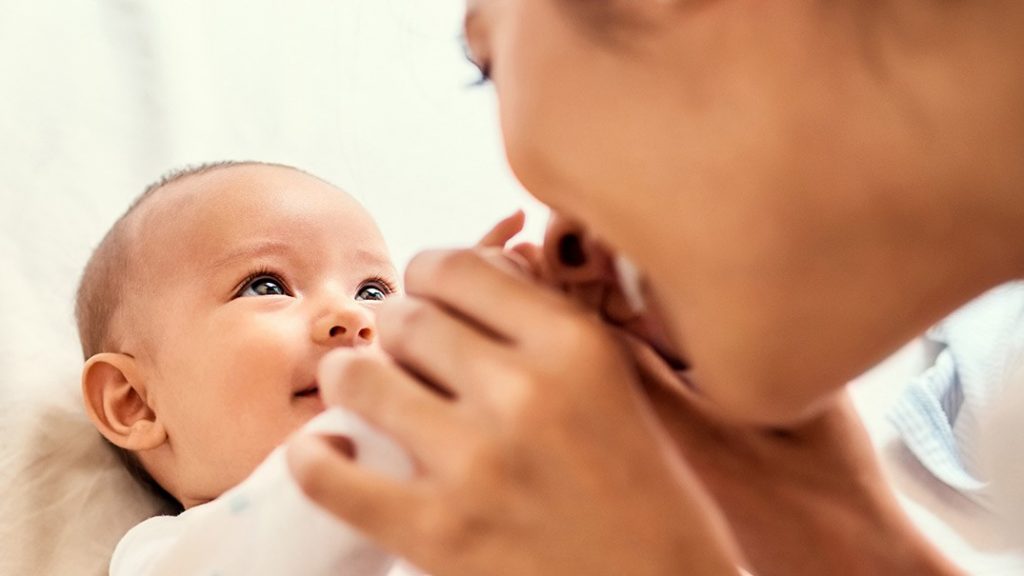
Another essential thing for mother when it comes to breastfeeding, is water consumption, it is very important for a breastfeeding mother especially to drink enough water in order to produce milk and to not making your dehydrate as well.
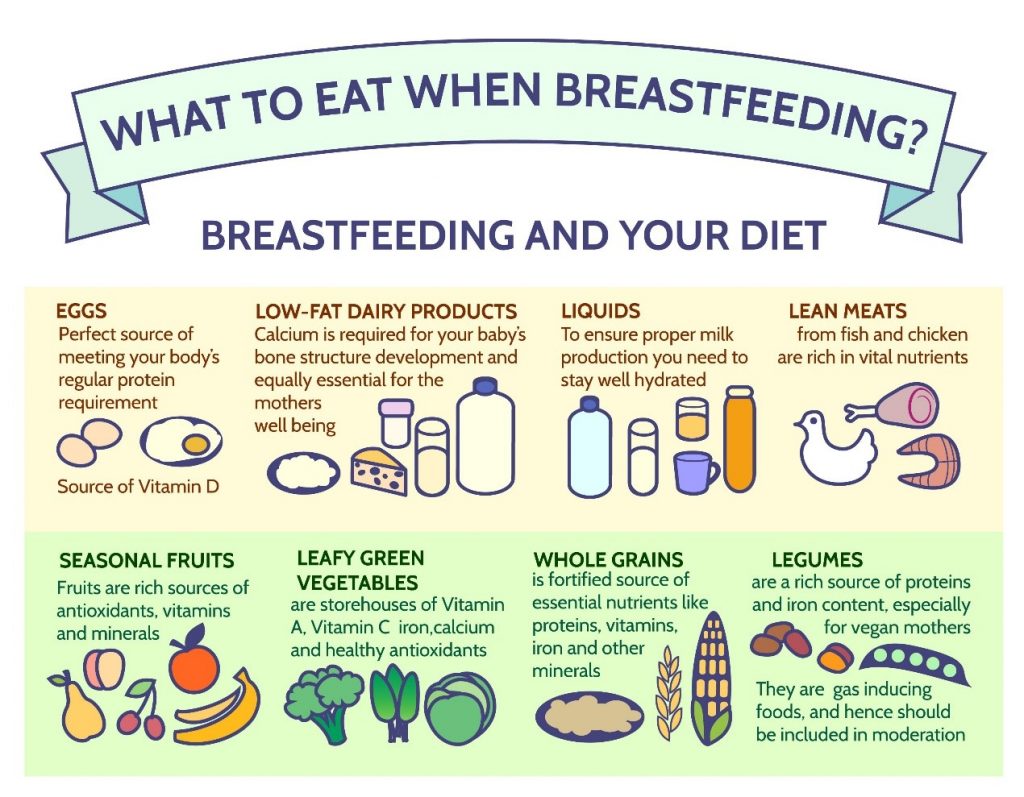
Be wary of juices and sugary drinks, however. Too much sugar can contribute to weight gain — or sabotage your efforts to lose pregnancy weight. Too much caffeine can be troublesome, too. Limit yourself to no more than 2 to 3 cups (16 to 24 ounces) of caffeinated drinks a day. Caffeine in your breast milk might agitate your baby or interfere with your baby’s sleep.
If you are exclusive pumping breastmilk for your baby, consider pumping your breastmilk every few hours in order to make sure the milk supply imitate the baby breastfeeding hour.
What foods and drinks should I limit or avoid while breast-feeding?
Certain foods and drinks deserve caution while you are breast-feeding. For example:
Alcohol. There is no level of alcohol in breast milk that is considered safe for a baby. If you drink, avoid breast-feeding until the alcohol has completely cleared your breast milk. This typically takes two to three hours for 12 ounces (355 milliliters) of 5% beer, 5 ounces (148 milliliters) of 11% wine or 1.5 ounces (44 milliliters) of 40% liquor, depending on your body weight. Before you drink alcohol, consider pumping milk to feed your baby later.
Caffeine. Avoid drinking more than 2 to 3 cups (16 to 24 ounces) of caffeinated drinks a day. Caffeine in your breast milk might agitate your baby or interfere with your baby’s sleep.
Fish. Seafood can be a great source of protein and omega-3 fatty acids. Most seafood contains mercury or other contaminants, however. Exposure to excessive amounts of mercury through breast milk can pose a risk to a baby’s developing nervous system. To limit your baby’s exposure, avoid seafood that is high in mercury, including swordfish, king mackerel and tilefish.
Remember, there is no need to go on a special diet while you are breast-feeding. Simply focus on making healthy choices — and you and your baby will reap the rewards.
References
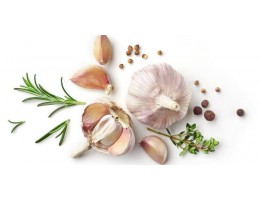
There is actually no specific study that has confirmed whether foods that have these lactogenic properties are able to increase milk production. However, usually foods that are suggested to be consumed in order to increase milk production are food that is rich in specific ingredients which can stimulate hormones used for milk production.
Factors influencing breastmilk production.
Breastmilk production is based on supply-demand system. The more the baby needs the more milk will be produced. However, this is also depending on the many factors as well such as hydration, stress level, separation between mother and child, new pregnancy and many more.
Mechanism of action of breastmilk production
Production of milk is directly influence by two types of hormones, oxytocin and prolactin. There are other hormones which influence production of milk indirectly such as oestrogen and progesterone. When a baby suckles at the breast, sensory impulse pass from the nipple to the brain. In response, part of brain will then secrete prolactin and another part will produce oxytocin.
Prolactin is important for the secretion of milk by the cells. The level of prolactin hormone in blood increases markedly during pregnancy and stimulates the growth and development of the mammary tissue, in preparation of the production of milk. However, milk is not secreted then because progesterone and oestrogen, these hormones of pregnancy, block action of prolactin. After delivery, the levels of progesterone and oestrogen will fall rapidly, thus prolactin is no longer blocked, and milk secretion begins.
Oxytocin hormone is the one who control the reflex in the breast for breastfeeding which call the “let-down reflex” or the “milk ejection reflex.” Oxytocin is produced more quickly than prolactin. It makes milk that is already in the breast flow and helps the baby to get the milk easily. Oxytocin starts working when a mother expects a feed as well as when the baby is suckling. The reflex becomes conditioned to the mother’s sensations and feelings, such as touching, smelling, or seeing her baby, or hearing her baby cry, or thinking lovingly about him or her. If a mother is in severe pain or emotionally upset, the oxytocin reflex may become inhibited, and her milk may suddenly stop flowing well. If she receives support, is helped to feel comfortable and lets the baby continue to breastfeed, the milk will flow again. It is important to understand the oxytocin reflex, because it explains why the mother and baby should be kept together and why they should have skin-to-skin contact. Oxytocin makes a mother’s uterus contract after delivery and helps to reduce bleeding. The contractions can cause severe uterine pain when a baby suckles during the first few days.
Lactogenic foods and breastmilk production
Thus far, there is no study established that lactogenic foods or galactagogues foods can increase breastmilk production. Since production of breastmilk is based on ‘demand-supply’ system. Thus, the frequent the breast is emptied the more milk will then be produced. However, eating healthy food, helps in transferring all the good nutrients to the baby. Food that is high with vitamins and minerals can help baby in their development as well, thus breastfeeding mother is suggest to eat healthily and increase her calorie intake to 2300 to 2500kcal per day as compared to moderately active women which is about 1800 to 2000 kcal. Breastfeeding mother also need to need avoid certain food such as caffeinated drinks.
Mother is suggested to consume protein-rich foods, such as lean meat, eggs, dairy, beans, lentils and seafood low in mercury. Choose a variety of whole grains as well as fruits and vegetables.
Eating a variety of foods while breast-feeding will change the flavor of your breast milk. This will expose your baby to different tastes, which might help him or her more easily accept solid foods down the road.
To make sure both mother and baby are getting all of the vitamins you need, it is recommended to continue take daily multivitamin such as vitamin B12 if you are vegetarian or if you are underweight, you may try to achieve the 2500 kcal diet, or you may use oral nutrition supplement to top up, your daily nutrient intake.
If you find that, certain food has that lactogenic properties on your body, you may continue consume it as it can increase your milk supply, but what works for you might not works for others. It can also be said that, eating food that you like can make you happy thus less stress and make you produce more milk, but again do not over consume it!
References
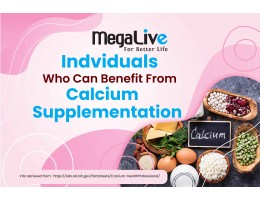
Function of Calcium?
Body needs calcium for strong bones and teeth. Calcium is also required to carry out important function such as for muscle to move, for nerves system to carry messages between brain and body parts, for blood vessels to move blood throughout the body, and for body to help release hormones and enzyme that affect almost every function in the human body (1,2,3).
How much calcium is needed?
Normal adult need about 1000 mg of calcium daily, however there are certain condition which require to consume up to 1300 mg of calcium daily such as for pregnant lady, lactating mother, post-menopausal women, and man who is above 70 years old of age (1,2,4).
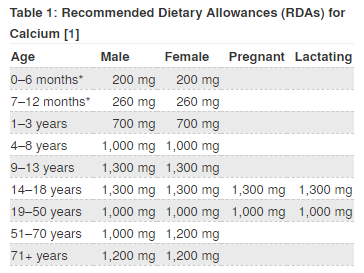
Calcium and diet
Body does not produce calcium, so it needs to be consumed from foods. Luckily, calcium can be found in variety of foods such as dairy products, dark leafy vegetables, fish, and many other fortified food products (1,2,3). As for our local food products sardine, anchovies, cencaluk, budu, tofu, tempeh, broccoli, kalian, and tapioca leaves are among food that is high with calcium (4).
It is also important to take note that in order to absorb calcium, body needs vitamin D. Only a few foods containing small amount of natural vitamin D, such as egg yolks and salmon with bones. Mostly, we rely on the exposure to sunlight in order to get enough vitamin D, of course in Malaysia the country with sun all year long have no problem with this! However, as currently we are still in the so to say the ‘lockdown’ phase thus it is very important to remind everyone to get the sunlight every day at least 20 minutes for its vitamin D and calcium absorption (1,2,4).
Though all the foods stated above are easily found, but there are conditions which hinder individuals from getting enough calcium from diet thus require it from calcium supplementation.
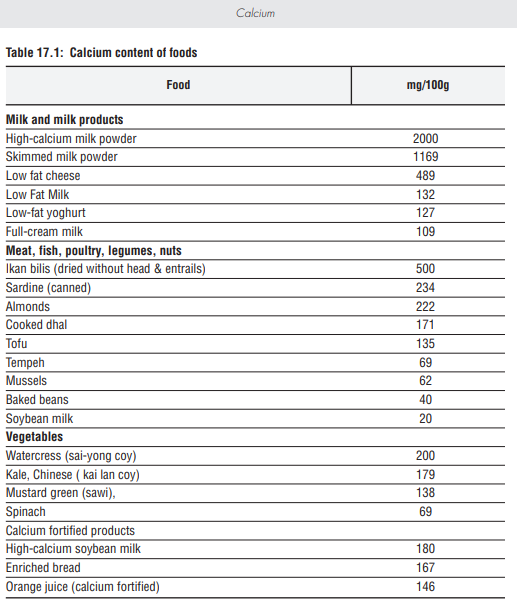
Condition for calcium supplementation
Before considering calcium supplement, individuals must understand how much calcium needs by the body (stated above). Then individuals must seek help from nutritionist, dietitian, pharmacist, or doctors, where they will assess your calcium consumption from your diet through diet recall. If the calcium intake falls short thus you need to top up calcium from supplement.
Hypertensive individuals and diet with large amounts of sodium.
Several literature reviews on topic of total calcium intake from food and supplements with regards to hypertension suggested that there is possible link to lowering high blood pressure. However, since most of the study design have small number of subjects, and were tested with people from different background, and not to mention possess various kind of biases thus making it difficult for scientist to draw conclusion (1,2).
However, a large study subject (Women’s Health Study), found out that calcium intake was inversely associated with risk of hypertension in middle-aged and older women, in terms of preventing hypertension (1,2).
The consumption of high sodium food lead to more calcium excretion through the urine, which will lead to constriction of blood vessels, which in the end resulting in high blood pressure. Drinking large water after consuming salty food, is not enough, as it may be making blood pressure return to its slightly normal condition, but it is not helping with the loss of calcium (1,2,5).
Pregnant and lactating mother
Often times, pregnant women is being reminded of how important is folic acid for the baby, even from the trying to conceive period, healthcare providers already advise them to consume folic acid, in order to prevent spina bifida to the baby. However, calcium is as well very important for mothers throughout pregnancy and lactating period especially for mother who is lack of calcium from diet (1).
Several professional organizations recommend calcium supplements during pregnancy for women with low calcium intakes to reduce the risk of preeclampsia (a condition where gestational hypertension always occur). For example, the American College of Obstetrics and Gynaecology (ACOG) states that daily supplementation with 1,500–2,000 mg calcium may reduce the severity of preeclampsia in pregnant women who have calcium intakes less than 600 mg/day. Similarly, the World Health Organization (WHO) recommends 1,500–2,000 mg calcium for pregnant women with low dietary calcium intakes, particularly those at higher risk of gestational hypertension (1).
As for normal healthy mother, the consumption of calcium is especially important during lactating period, mother may notice symptoms such as cramps which indicates lack of calcium during pregnancy and lactation period. Also if a mother is on iron supplementation as well, it is advisable to not consume both at the same time, it is best to gap several prior the consumption of these two since it can interfere with the absorption (1,2).

Throughout the lifespan, bones are constantly being broken down and built up in a process known as remodelling. Bone cells called osteoblasts build bone, while other bone cells called osteoclasts break down bone if calcium is needed. In healthy individuals who get enough calcium and physical activity, bone production exceeds bone destruction up to about age 30. After that, destruction typically exceeds production. This is sometimes called “negative calcium balance,” which can lead to bone loss. Women tend to experience greater bone loss than men later in life due to menopause, a condition that lowers the amount of hormones that help to build and preserve bone (5).
Getting enough dietary calcium at all ages may help to slow the degree of bone loss, but calcium intakes at any level are not known to completely prevent bone loss. Calcium is less easily absorbed at later ages, and therefore eating a very high amount of calcium will not always resolve the problem (5).
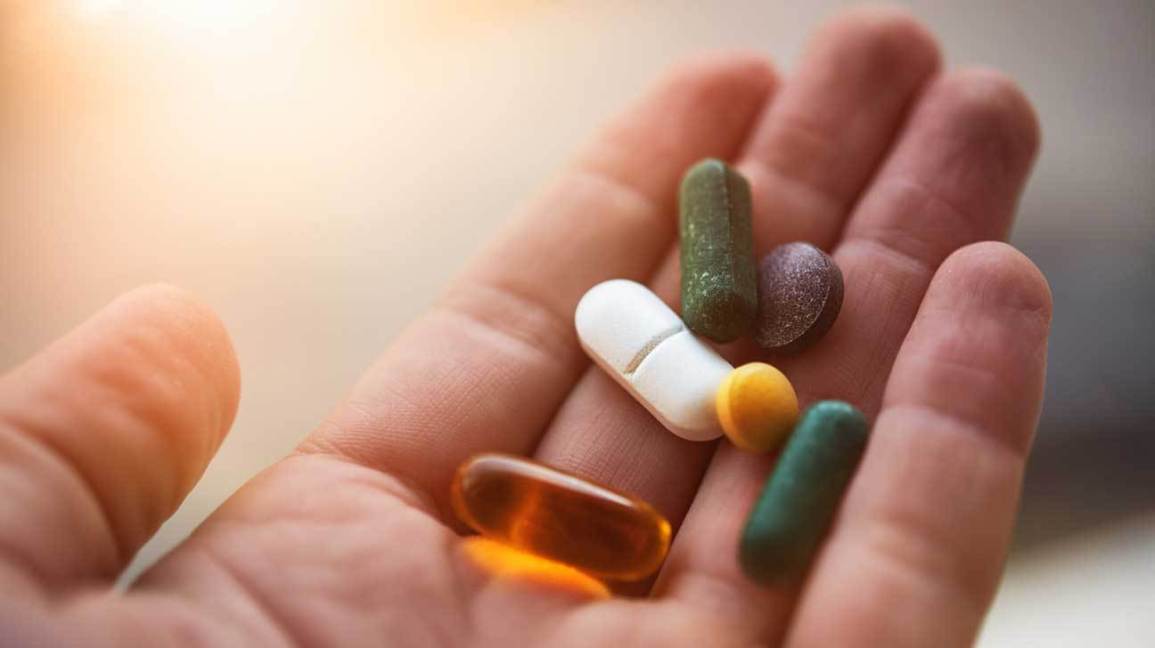
Individuals with lactose intolerance and limit dairy products
Individuals with lactose intolerance usually, is unable to consume food that has high amount of calcium especially if it come from milk and dairy source of food. Thus, lactose intolerance individuals need to consume it form dark leafy vegetables and soy-based product. However, in most cases the consumption is not enough or individuals with lactose intolerance consume not enough vegetable rich with calcium or other food source rich with calcium, thus for this specific population calcium supplementation is needed either from fortified food product such as ready to eat cereals or from calcium supplementation tablet itself.
Individuals receiving treatment on certain medication in the long period
Well, there are certain medication which can influence the absorption of calcium. Medication such as to treat osteoporosis (bisphosphonates), antibiotics (fluroquinolone), medication to treat low thyroid problem (levothyroxine), anticonvulsant (phenytoin), diuretic medication (Lasix and bumex), antacids containing aluminium and magnesium and also glucocorticoids (prednisone). These are all either causing calcium loss in the urine or cause calcium depletion in the bone. Thus, if you are on these medication, it is advisable to take calcium rich foods four hours prior or after the intake of medication, so that it would not interfere with the absorption of calcium, it is also best if you consume calcium supplementation if you do have poor intake of calcium rich food as well (2).
In conclusion, in these situations, calcium supplements may help you meet your calcium requirements. Talk with your doctor or dietitian about whether calcium supplements are right for you.
References

Omega-3-rich foods
The term "good fat" usually refers to omega-3 fatty acids. It regulates skin oil production, improves hydration balance, controls breakouts, and reduces signs of ageing. Furthermore, when applied topically, it can help soften rough, dry skin and soothe irritation and dermatitis. Omega-3-rich foods can improve skin composition by balancing its inflammatory response to sun damage, as well as improve sensitive skin condition by making it less dehydrated and dry.
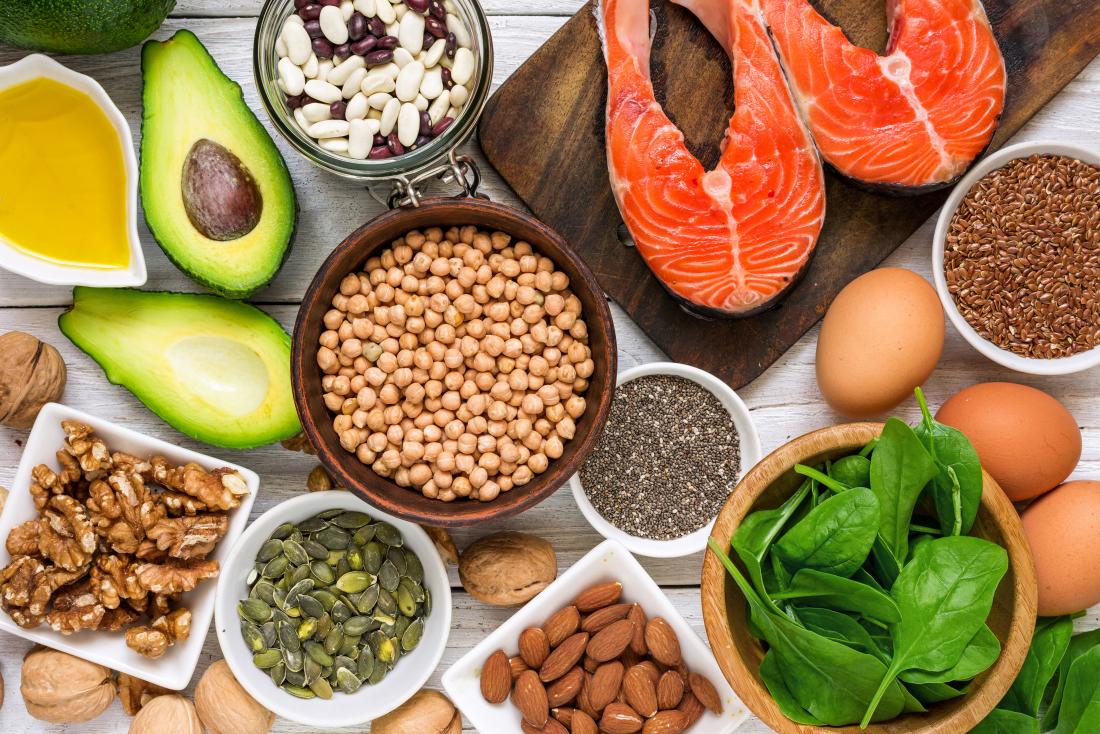
Fish is high in Omega 3 fatty acids. Specifically, fish oil. As a result, if an individual does not consume fish at all or prefers not to consume fish, it is recommended that they take Omega 3 and 6 supplements for their heart health. Omega-3-rich fish include mackerel, tuna, sardine and anchovies, salmon, and herring. Freshwater fish rich in omega 3 are also available in Malaysia, including catfish (ikan keli), patin fish, and terubok fish.
Aside from that, certain plant-based foods, such as spinach (bayam), mustard leaf (sawi), and 'salad roket,' contain high levels of omega 3. There are also omega-3-rich oils that can be used in cooking, such as canola oil. Also, if you want to improve the health of your skin, instead of snacking on chips or other unhealthy foods, try eating walnuts, which are high in omega 3.
Antioxidant and vitamin-rich foods
Plant-based foods, such as vegetables and fruits, are typically high in antioxidants and vitamins. Fruits and vegetables high in vitamins like C, E, and A are known as skin best friends.' All of these vitamins work in the same way when they engulf free radicals or reactive oxygen species (ROS). Free radicals can be produced naturally in the body, or as a result of UV radiation exposure, among other things. In other words, it is something that happens to everyone. As a result, it is critical to consume foods high in vitamins and antioxidants to combat all of the problems caused by free radical formation.
The Malaysian Ministry of Health recommends eating two servings of fruits and three servings of vegetables per day. The cupped hand size is used to determine vegetable serving size. As a result, 2 cupped hand size equals 2 servings. While the serving size for fruit varies depending on the type of fruit, 1 serving is equivalent to 1 fruit for medium-sized fruit such as apple, pear, and orange, while larger fruit is dependent on the normal cut sized. To simplify things, if you eat two apples, two pear, two bananas, or two oranges per day, you've already met the daily serving requirement.
Guava, orange, and lemon are examples of vitamin C-rich foods. Did you know that guava has twice the vitamin C content of an orange of the same size? Consuming 2 servings of guava or 1 small guava already meets your daily vitamin C requirement (75mg).
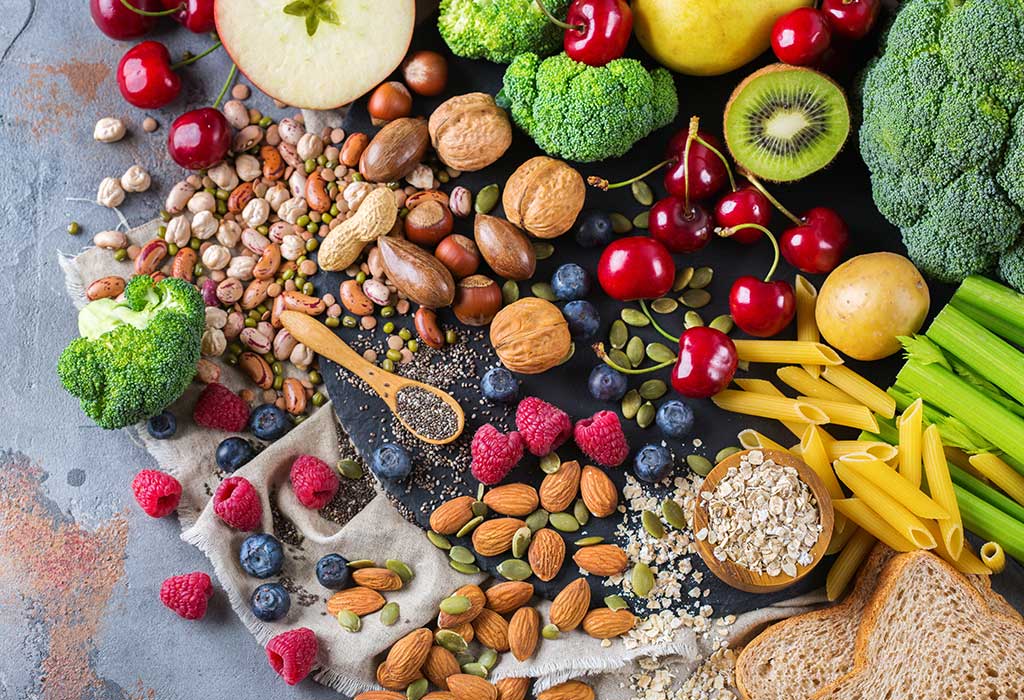
Almond, pumpkin, corn, collard, red bell pepper, and soy-based foods are examples of vitamin E-rich foods. According to research, Vitamin E or tocopherol works synergistically with Vitamin C to protect against UV radiation or sun damage.
Since most of the antioxidant- and vitamin-rich foods are mainly fruits and vegetables, it is essential to consume fruits and vegetables as suggested to have young looking skin!
Sugar
Sugar, as many people already know, is bad for your health because it raises your blood sugar level, which can lead to obesity, diabetes, heart disease, and other metabolic diseases. But it's also bad for your skin.
Sugar, in any form, has an impact on the two main causes of acne: hormones and inflammation. When you consume refined and processed carbohydrates, such as white sugar, your blood sugar levels rise faster, and your pancreas responds by releasing insulin. By avoiding sugar, you may be able to reduce the amount of insulin your body produces, which will reduce the oil and acne production.
Desserts such as cakes, tarts, cookies, 'traditional' kuih, and bakery products are high in sugar. Our daily staple foods are also high in refined carbohydrates or refined sugar. White rice, white bread, noodles, and flour-rich foods are all high in refined carbohydrates, which can harm the skin condition in the long run.
In conclusion, eating a healthy and well-balanced diet is the best way to achieve younger-looking skin. Consuming a lot of fresh products, limiting processed foods, oily foods containing trans fat, and sugary foods will help you not only have younger looking skin but also a healthier body!
References

Culturally, humans rarely consume placenta, but recently there has been growing interest in consuming placenta, be it from humans or animals. Mammals have been consuming placenta since years ago; it is called placentophagia, while in humans it is called placentophagy. The placenta could be served raw, cooked, or encapsulated and taken as a supplement as it contains various nutritional benefits.
Rave on this started when many Hollywood celebrities started using placenta therapy as part of their skincare routine treatment. Celebrities like Kim Kardashian, Victoria Beckham, and even male celebrities like Harry Styles from One Direction have said they have been using this for their skin to get baby-soft skin.
Placenta consumption in Malaysia.
In Malaysia, it is rare for people to consume raw placenta. Usually, it comes in health supplement form and is derived from deer or sheep. Hence, as it is in health supplement form, any products containing placenta extract in a pharmaceutical dosage will require to be registered with the Drug Control Authority (DCA) before they are sold or used in Malaysia.
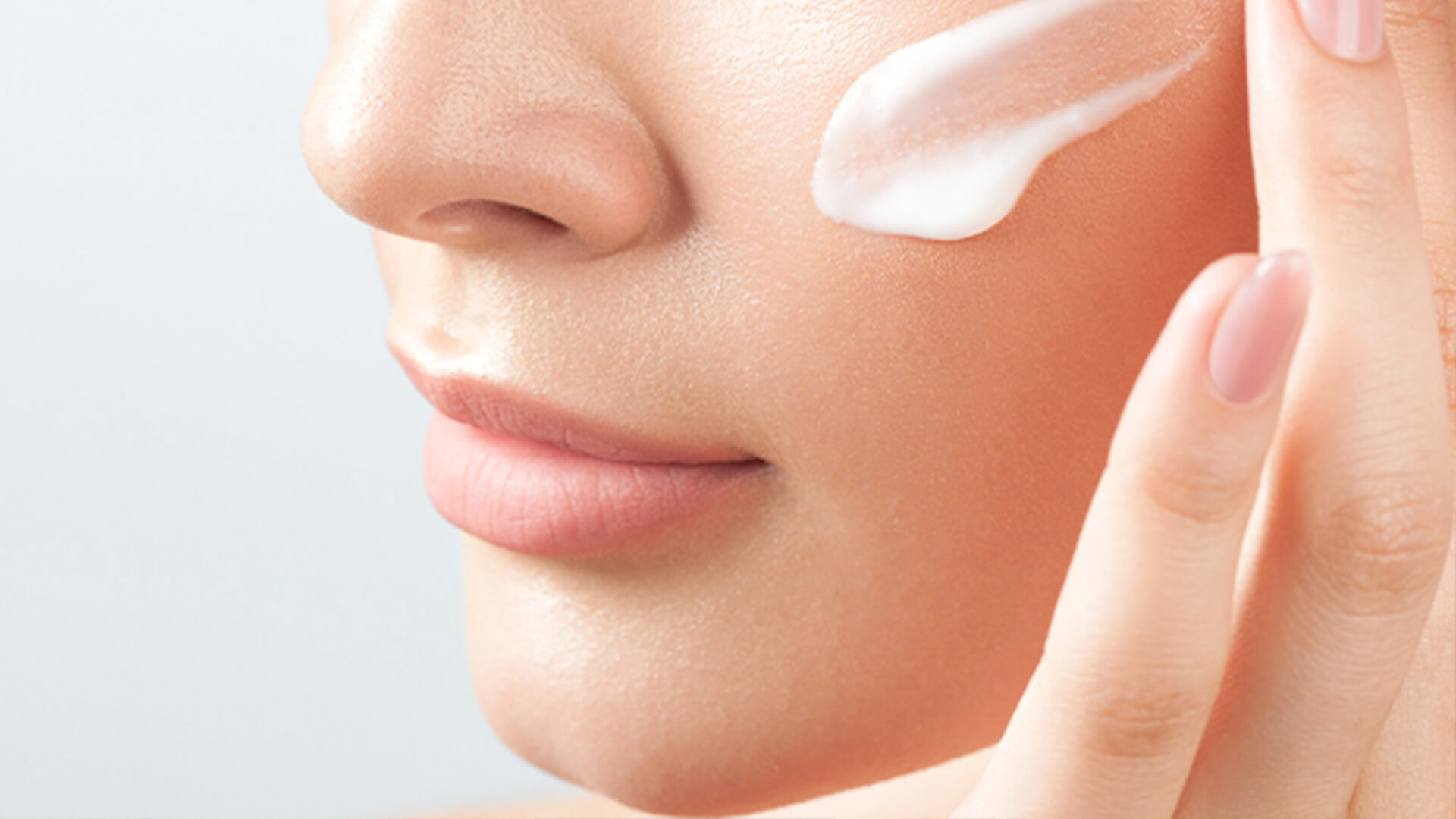
Benefits of placenta consumption.
Findings from research reported that nutrients that are delivered via the placenta could be retained even after the process of delivering the baby. The research also stated that the placenta contains collagen, elastin, laminin, and vitamins such as B1, B2, B3, B4, B5, B6, B7, and B12. All these vitamins, better known as B complex vitamins, play roles in cell metabolism, cell division, cell development, and energy production.
Due to this aspect as well, it is said that it gives a lot of benefits to skin health. Placenta is even used in clinical settings, such as for burn injuries and wound healing. In one study, researchers compared the efficacy of topical placental extract dressings versus povidone iodine dressings in diabetic wounds in a variety of patients. Placenta wound dressings could significantly accelerate the rate of wound healing when compared to povidone-iodine dressings as they contained amino acids, vitamins, and nucleotides, which accelerated wound healing recovery by seven to ten days.
Due to all these effects, many skincare products have recently incorporated placenta, be it from sheep or deer, in their skincare or supplement products.
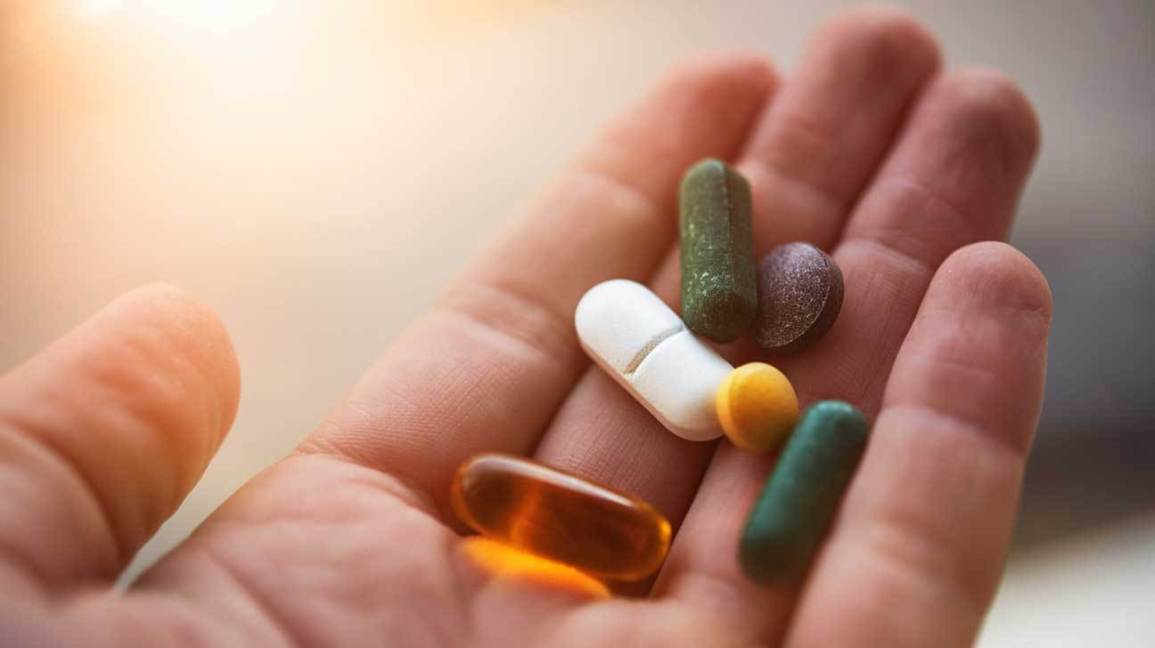
Caution with regard to placenta in the supplement
When it comes to placenta consumption as a health supplement, it is evaluated based on its safety of use and product quality. To be safe, sheep placenta products must be hormone-free. Because placenta typically contains hormones such as testosterone, oestrogen, and progesterone, being hormone-free is much more important for a placenta-based supplement. To confirm whether the products you are considering or consuming have been notified by the Ministry of Health, you can conduct an online product search on the National Pharmaceutical Registration Agency (NPRA). However, if the product is not listed in the DCA, it is not recommended that you consume it because its safety and quality have not been evaluated, and it may pose a health risk.
References
-260x200.jpg)
But, what if it is not in good condition? Is it hormonal in nature? Is it related to food? Is it hereditary? Is it any of these?
Yes, it is indeed all of these!
Skin that appears younger is closely related to lifestyle and genetics. According to research, there is a gene in the human body that controls our skin condition. Have you ever wondered why certain people of similar age but different appearances appear younger than their actual age while others appear older? The study by dermatologist professor Alexa B. Kimball from Harvard revealed that this has something to do with gene expressions.
According to the study, people with rapid gene expression speed up the skin-repairing process when exposed to external or internal stress, which is why they can maintain younger-looking skin. It has also been observed that some people who appear young have rapid gene expression that mimics those who are younger than their chronological age. According to the professor, the skin appears younger because it behaved younger (1)!
To elaborate, the one described above is known as intrinsic skin ageing, and it represents chronological ageing, with the same pattern affecting all internal organs. Extrinsic skin ageing, also known as aged skin, is caused by external factors such as environmental influence, particularly chronic sun exposure and ultraviolet (UV) irradiation, but also smoking, pollution, sleep deprivation, and poor nutrition. As a result, when it comes to skin, the best way to avoid harm is to avoid all of these extrinsic factors (1).
A study that compared sun-exposed skin (face and forearm) to sun-protected skin (buttock) among women aged 20 to 70 years old discovered that ultraviolet (UV) exposure is a major driver and accelerator of skin ageing. Although sun exposure without any skin protection, such as sunscreen, is harmful to the skin, there is a recommended amount of time spent outdoors without sunscreen so that UVB from the sun can activate vitamin D3 in the skin. The recommended exposure time is 5 - 30 minutes between 10 a.m. and 3 p.m., at least twice a week, to the face, arms, legs, or back (2). In Malaysia, where the weather is sunny all year, excessive sun exposure can cause skin damage. As a result, if one of your 2021 resolutions is to avoid sun damage, you should start wearing sunscreen religiously!
Apart from smoking and pollution, which can both cause skin damage, sleep deprivation can also cause skin to appear older. Sleep serves as a reset button for our entire health, including our skin. During sleep, the blood flow to the skin increases, and the organ rebuilds collagen and repairs UV damage, reducing wrinkles and age spots. According to research, sleep deprivation affects wound healing, collagen growth, skin hydration, and skin texture. Inflammation is also higher in sleep-deprived individuals, causing acne outbreaks, eczema, psoriasis, and sin allergies. To combat this, health experts recommend 7 to 9 hours of beauty sleep per day to achieve fluffy baby skin (3,4)!
Poor nutrition is also a major contributor to the appearance of older skin, and the worst culprit of all is sugar! Glycation is the process by which sugar interacts with skin. Younger-looking skin is always associated with firm and elastic skin, which refers to the cross-linking structure of skin fibres. This structure can repair itself naturally; however, when sugar is consumed, the glycation process renders the structure and renders the skin unable to remodel into its original structure. As a result, the youthful skin condition has vanished! This explain, sugar consumption is not only bad for metabolic conditions like diabetes mellitus, but also for skin conditions.
To summarise, the skin is the largest and most delicate organ; it may appear strong and capable of withstanding all of the external and internal harm that we inflict on it, but it, too, requires pampering. A good skincare routine will help with its condition, but it also requires good food, hydration, and sleep to keep everything in check and balance!
References


Functions of EPO in Women’s Health.
There are various functions of EPO, such as treating eczema, a condition in which the skin becomes inflamed, itchy, scaly, and flaky due to allergies or irritation. Besides, it has also been used to treat acne, psoriasis, and other skin conditions. Which explains why it is commonly used among women since a pretty appearance is something every woman desires (1, 2, 3).
Apart from this, it has also been used to relieve the physical and psychological symptoms of pre-menstrual syndrome (PMS), such as cyclical mastalgia (breast pain), mood swings, headaches, depression, food cravings, period cramps, irritability, bloating, fatigue, irritable bowel syndrome, and hormonal acne. According to the study, 85% of menstruating women are affected by these symptoms, and the study shows that there is significant improvement in the severity and duration of PMS in the group using EPO as compared to the placebo group (1, 2, 4). Researchers believe that some women experience PMS because they are sensitive to the level of prolactin that is produced during ovulation and increases during the luteal phase. So, what EPO does is that the active ingredients inside it (GLA) convert to prostaglandin E1 in the body, which is able to help prevent prolactin from triggering PMS (4).

As for women during menopausal age, EPO has been seen to help with menopausal symptoms such as hot flashes (the most common symptoms in the menopausal syndrome). A study among 56 menopausal women in the age range of 45–59 observed that there is a significant reduction in hot flash symptoms among menopausal women using EPO (4).
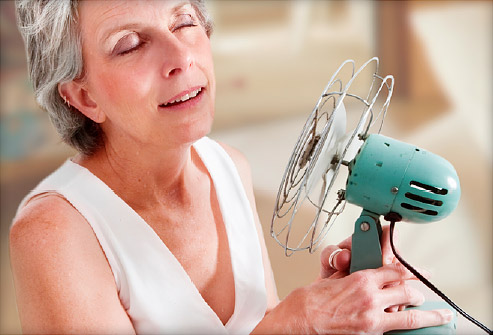
Dosage and what to be cautious of with EPO
Evening primrose oil is classified as a herbal supplement, and the dosage is determined by a variety of factors. Many studies currently recommend a daily dose of 1 -3g (1,4). There are some studies that mention or use higher dosages of EPO, but using higher dosages of EPO requires advice from pharmacist or doctor because it may have side effects. Consumption of medication such as schizophrenic medications, antiplatelet medication, anticoagulant medication, and seizure medication is also contraindicated with EPO consumption, which is why it is best to seek professional advice before consuming EPO as it may interfere with medication that you are consuming (1,4).
In conclusion,
EPO can help women with their hormone regulation from they reach their puberty age, post-delivery of the baby, and during menopausal age. Which is why it can be said as women B.F.F (best friend forever) throughout their healthy journey!
References
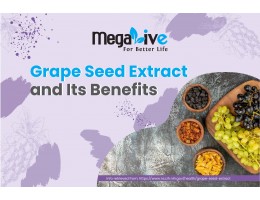
Numerous studies have shown that grape seed extract contains a high level of antioxidants. Using punctured wounded mice, researchers discovered that mice treated with GSE in the wound affected area grew tissue faster than mice treated with only normal saline. Another difference between GSE-treated mice and placebo-treated mice was more organized tissue formation and a higher rate of collagen deposition.
Topical application of 2% GSE cream in the area of a post-surgery surgical wound heals the wound completely in an average of 8 days, compared to 14 days for placebo. This is due to GSE's vascular endothelial growth factor (VEGF) properties, which promote the regeneration of damaged blood vessels while increasing the amount of free radicals present at the wound site. Free radicals aid in the killing and removal of pathogenic bacteria and endotoxin from the site, as well as in the healing of wounds
Apart from wound healing and skin health properties, it also has anti-ageing properties. GSE proanthocyanidins delay skin ageing by reducing lipid oxidation on the skin structure.
Cardiovascular and antihypertensive properties.
Cardiovascular disorders (CVD) are among the major problems that arise due to modern, unhealthy lifestyles, which are the primary cause of death worldwide. It is a disorder that affects the condition and function of the heart and blood vessels in general. Changes in these two can result in cardiac arrest, heart stroke, hypertension, chest pain, and other complications. Studies show that GSE may prevent atherosclerosis (a condition where there is a build-up of fats, cholesterol, etc. in the blood vessel walls, which can restrict blood flow), inhibit or limit the oxidation of LDL (bad cholesterol), reduce inflammation, inhibit platelet aggregation, and lower blood pressure. It lowers blood pressure by suppressing oxidative stress and inhibiting the angiotensin-converting enzyme (ACE) and nitric oxide, which mediate vasodilation, hence making the constricted blood vessels dilate and improving blood pressure.

Antimicrobial activity
GSE has been shown to have antimicrobial properties; for example, when applied topically, resveratrol in GSE increases the production of cathelicidin, which inhibits the growth of Staphylococcus aureus. In another study, quercetin, caffeic acid, and quercetin-3-0-rutinoside in GSE were responsible for the inhibition of Listeria monocytogenes. It is also worth noting that GSE had the highest inhibition activity against almost all Listeria species. The review on the benefits of GSE also reported that the antimicrobial effect of GSE is attributed to changes in cell morphology and DNA content.
Cosmetic and nutraceuticals
Skin ageing is a natural process which occurs due to the external and internal factors involving genetic, hormonal, and environmental factors. GSE is rich in proanthocyanidin help to reduces the lipid oxidation of cellular structure of the skin and inhibit the production of free radicals. A study was carried out in which the anti-ageing effect of GSE was investigate. The study concluded that GSE has a promising role as an anti-ageing compound.
GSE help skin structure by strengthening the collagen-based tissue (by increasing the collagen cross links). It also increases the synthesis of collagen and the conversion of collagen from soluble into insoluble one.
In conclusions,
GSE has various benefits to health due to its high antioxidant properties, it is able to scavenge the free radicals which an essential feature that could help with various body functions.
References
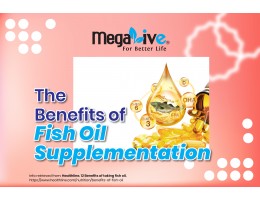
Consumption of fish is important as it is a good source of protein. It is recommended to consume one fish per day, according to the Malaysian food pyramid. This is because the consumption of fish in Malaysia is rarely equated with a risk of contamination with mercury, etc., unlike in western countries. This might be due to the types of fish and sizes of fish that we are consuming here as compared to other parts of the world. It is said that the bigger the fish, the more contamination it has; hence, there is a recommendation for pregnant mothers to consume small fish rather than big fish to avoid the risk of contamination.
Research on the benefits of fish oil supplementation also varies greatly, which is why in this article we are going to list out who might need a fish oil supplementation in their daily lives!
The benefits of ingesting fish oil can differ significantly between studies. A study found a connection between these omega-3 fatty acids and mental health disorders and that EPA and DHA can speed up brain development even in young children. Additionally, studies have demonstrated that it can help treat cardiovascular diseases, joint pain, and eczema. The question is, is it true that all of these effects can be obtained from fish oil consumption? (1)
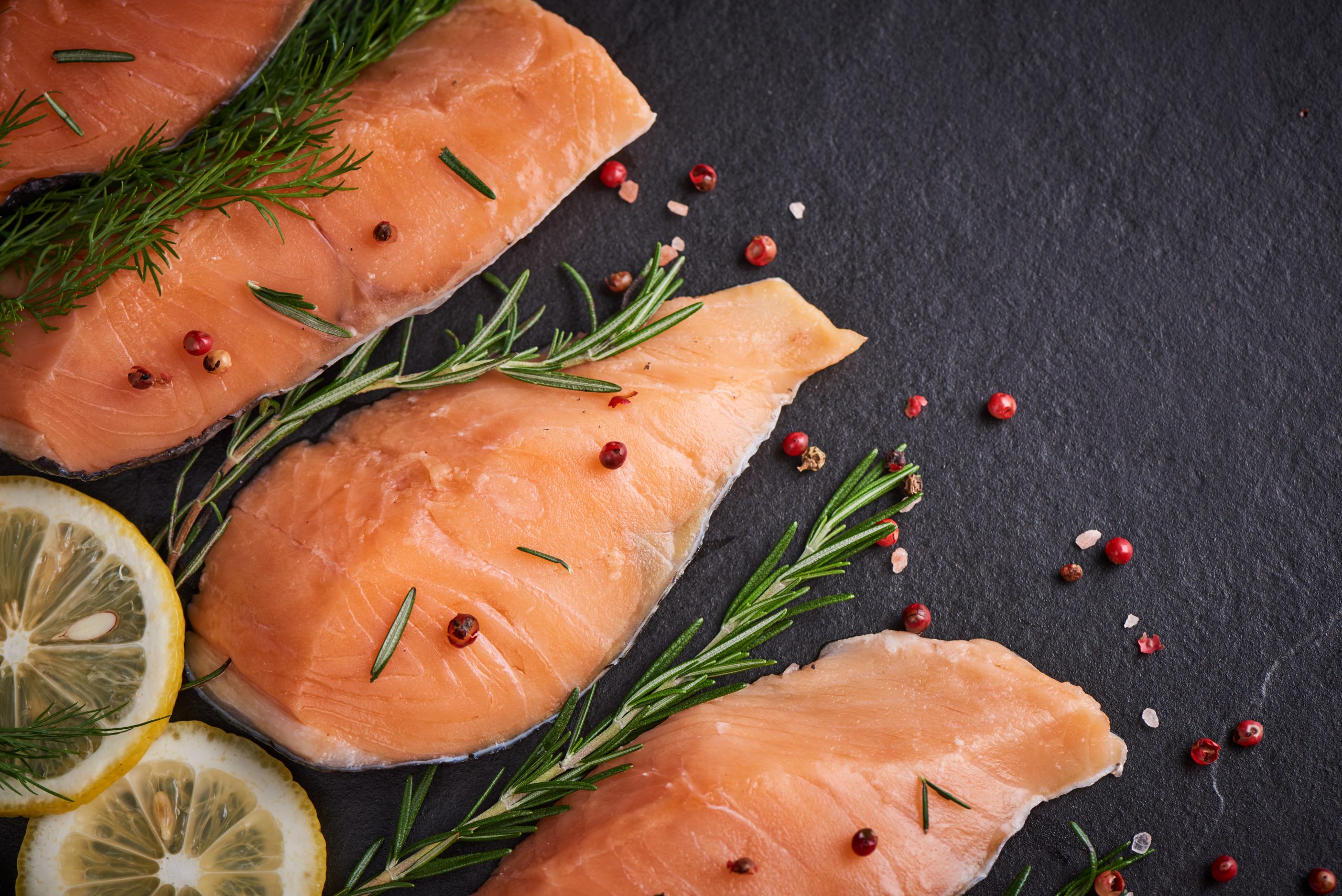
Individual with mental health problems/disorders
In three lengthy studies spanning the years 1988 to 2008, researchers looked at the relationship between fatty acid intake and suicide risk among more than 205 000 participants. They discovered no proof that eating fish or fatty acids reduced the risk of suicide. "The vast majority of earlier research on whether fatty acid intake has any positive effects on mental health has been based on results from depression screening. The only time this relationship has been studied with concrete data on suicide mortality is in our study, which is also the largest of its kind.” (2)
While a study found that eating a balanced diet and exercising regularly are better for brain health than taking fish oil or omega-3 fatty acid supplements, A study of 3073 elderly people at risk of macular degeneration, an age-related cause of vision loss, found little benefit from omega-3 supplements on memory. Omega 3 supplements or a placebo were given to study participants at random for a five-year period. According to the researcher, a healthy diet cannot be replaced by a supplement; therefore, if you eat a healthy diet rich in fruits, vegetables, and marine fish, you probably don't need to take a fish oil supplement. According to this study, the overall dietary pattern is more important than a single nutrient (2).
Individuals with cardiovascular disease
Recently, there have been many studies suggesting that Omega 3 will not lower the risk of heart problems. To answer this, Dariush Mozaffarian, cardiologist from Harvard Medical School, said that he gathered 20 previous studies involving more than 68, 000 patients since 1989 and found that, overall, fish oil supplements did neither harm nor good since they did not significantly reduce people’s risk of mortality, cardiac death, heart attack, or stroke. But according to him, the research link between fish oil supplementation and heart problems is rather complex since it does not only take fish oil to shield the heart from various problems and diseases; it also takes weight status, exercise frequency, cigarette or substance use, and many more (3,4,5).

Which is why, interpreting the study, we would still recommend customers and patients consume more fish as a first-line measure. But if you do not like fish, or you feel like your consumption of fish is not enough, or you simply want to be sure that your body is getting omega 3, there is no harm in taking fish oil; it will certainly help with the essential nutrient, since omega 3 is a nutrient that your body cannot produce and can only get from diet (3,4,5).
Individuals with skin problem
A systematic review for the treatment of atopic dermatitis or eczema using fish oil supplementation is very scarce; the studies available are all small-sample studies. Not only are these three studies small, but they are also described as poor methodological studies by the reviewer, as they have many confounding factors. However, the outcomes of these studies show positive outcomes for eczema and overall daily living as compared to placebo (6, 7).
Another convincing relationship between consumption of fish oil and skin health is that in a study where pregnant women were given fish oil during pregnancy and followed up for 6 years, it was found that consumption of fish oil during pregnancy led to a positive skin health outcome for babies skin. The study also concluded that maternal supplementation with fish oil might have prophylactic potential for long-term prevention of asthma in offspring (6, 7).
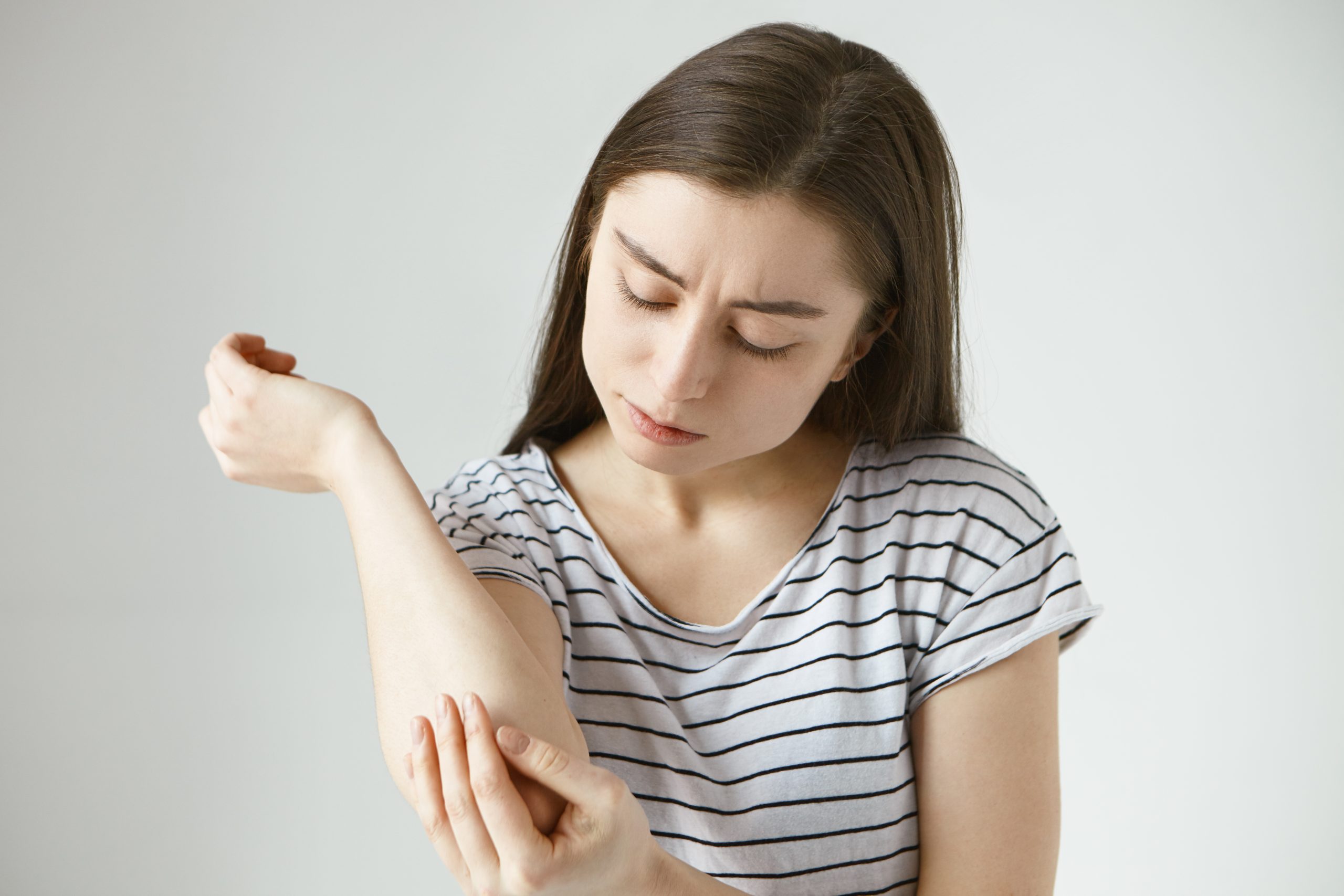
In conclusion, consumption of fish oil has mixed results in studies depending on what kind of problem we are looking to solve with fish oil. Since there are various factors influencing a particular health problem, There is no magic pill in this world, honey! You need to, however, eat healthily, consume a lot of vegetables and fruits, and exercise, but if you think that you do not get enough omega 3 from your diet because you dislike fish, are afraid to consume fish regularly due to contamination, etc., or simply would like to make sure that your body has enough omega 3, then there is no harm in taking fish oil supplementation. It's just that in order to make sure you get the right omega 3 for your body, buy it from a pharmacy, make sure the product has a Ministry of Health (MOH) notification number, and simply ask a healthcare professional which omega 3 supplementation suits you, simply for the dosage and perhaps current medication that you are on, and you are good to go!
References
Harvard T.H Chan. School of Public Health. Fish: Friend or Foe? https://www.hsph.harvard.edu/nutritionsource/fish/
Harvard T.H. Chan. School of Public Health. No mental health benefit from fish oil. https://www.hsph.harvard.edu/news/hsph-in-the-news/no-mental-health-benefit-from-fish-oil/\
Harvard T.H. Chan. School of Public Health. https://www.hsph.harvard.edu/news/hsph-in-the-news/fish-stroke-risk-mozaffarian/
Harvard T.H Chan. School of Public Health. Major Meta Analysis in Clinical Trial Omega 3 Supplemeny link with lower risk of CVD. https://www.hsph.harvard.edu/news/press-releases/in-major-meta-analysis-of-clinical-trials-omega-3-fish-oil-supplements-linked-with-lower-cardiovascular-disease-risk/
Harvard T.H. Chan. School of Public Health. Fish Oil Supplementation and Heart Health. https://www.hsph.harvard.edu/news/hsph-in-the-news/mozaffarian-fish-oil-supplements-heart-health/
Schlichte, M. J., Vandersall, A., & Katta, R. (2016). Diet and eczema: a review of dietary supplements for the treatment of atopic dermatitis. Dermatology practical & conceptual, 6(3), 23–29. https://doi.org/10.5826/dpc.0603a06
Huang, T. H., Wang, P. W., Yang, S. C., Chou, W. L., & Fang, J. Y. (2018). Cosmetic and Therapeutic Applications of Fish Oil’s Fatty Acids on the Skin. Marine drugs, 16(8), 256. https://doi.org/10.3390/md16080256

Collagen is a fibre-like structure that is used to make connective tissue, which connects other tissues together. It is a major component of bone, skin, muscles, tendons, and cartilage. Collagen is a component that helps make tissue strong, resilient, and able to withstand stretching (1).
Although the saying that our bodies make less collagen as we age is true, the production of collagen drops most not only because of this but also due to excessive exposure to the sun, smoking, including secondhand smoke, excessive consumption of alcohol, lack of sleep, and lack of exercise. As the collagen levels in our skin diminish, the deep skin layers change from a tightly organised network of fibres to an unorganised maze. Environmental exposure to the skin, such as harsh weather, can also damage collagen fibres by reducing their thickness and strength, which can lead to wrinkles on the skin surface (1).

Research on collagen supplementation focuses mostly on joint and skin health. Although studies pertaining to this using human subjects are still lacking, some randomized controlled trials have found that collagen supplementation improves skin elasticity. In one study, women who took a supplement containing 2.5–5 grammes of collagen for 8 weeks experienced less skin dryness and a significant increase in skin elasticity as compared to those who did not. Another study found that women who consumed it for 12 weeks experienced increased skin hydration and a significant reduction in wrinkle depth as compared with a control group (1, 2, 3, 4).
Trials on collagen supplements and joint health also found that they can improve joint mobility and decrease joint pain in people with osteoarthritis or in athletes (5). Collagen comprises about 60% of cartilage, a very firm tissue that surrounds bones and cushions them from the shock of high-impact movements, so a breakdown in collagen could lead to a loss of cartilage and joint problems.

Other than the consumption of collagen-based supplements, there are also foods that are rich in collagen or that encourage collagen production other than the lifestyle modifications mentioned above. Foods such as tough cuts of meat full of connective tissue like pot roast, brisket, and chuck steak. However, a high intake of red meat is not recommended as part of a long-term healthy diet. Collagen is also found in the bones and skin of freshwater and saltwater fish. Bone broth, which requires animal bones to simmer in water with a small amount of vinegar for 4–24 hours, is also said to have high collagen properties. However, the amount of amino acids will vary among batches depending on the types of bones used, the cooking period, and many other factors. Other foods that can help with the production of collagen are foods that are rich in zinc, such as legumes, nuts, seeds, whole grains, and vitamin C-rich foods, such as citrus fruits, bell peppers, and tomatoes.

Although studies on the effectiveness of collagen for health are still lacking, many available studies have not shown negative side effects in individuals given collagen supplements (6). Thus, it is worth trying for its said benefits, especially if the benefits are your health concerns! But be sure to talk to your healthcare professionals about this based on your medication intake and your health issues before consuming any health supplement.
References
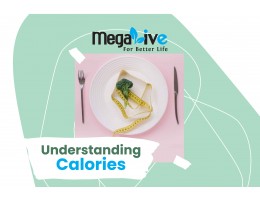
Calories are a unit of measurement for the amount of energy in food and beverages.
We put energy into our bodies when we eat and drink. This energy will then be used in our daily activities, such as breathing, sleeping, and running.
To maintain a stable weight, we must balance the energy we put into our bodies with the energy we use through normal body functions and daily activities. Simply put, the more calories you put into your body, the more activities you need to do to burn them off, and vice versa.
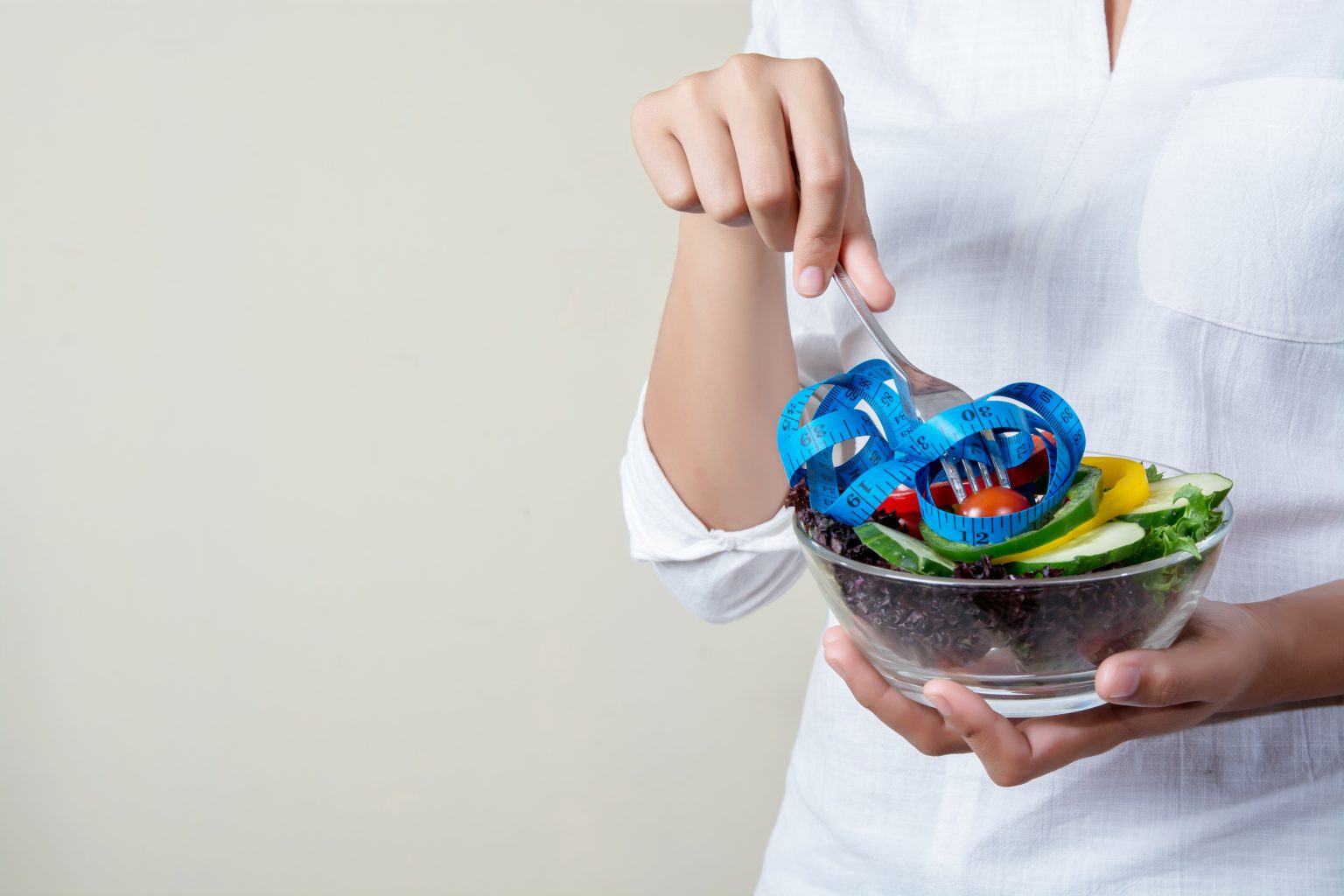
General calories intake
Men on average need about 2500 kcal per day, while women need about 2000 kcal per day. However, as mentioned above, the amount of recommended nutrient intake varies from person to person based on their daily activities, occupation, frequency of exercise, lifestyle habits, and also body metabolism.
The more vigorously you engage in an activity, the more calories you will expend. Fast walking, for example, burns more calories than moderate walking. If you're gaining weight, it could be because you've been eating and drinking more calories than you've been burning. To lose weight, you must expend more energy than you consume; this can be accomplished by eating less or exercising more vigorously. Doing this consistently over time will get you to your desired weight.
When people try to lose weight, they tend to restrict their food intake and often do not enjoy their diet changes. A healthy diet should also be a sustainable diet, which means gradually but consistently reducing unhealthy food consumption, consuming more healthier food options, and being mindful of the amount of food consumed.
Calorie counter
Nowadays, there are various apps that can be used on a mobile phone to track not only your calorie intake but also your steps, exercise, and the energy that you burn. Using all these apps and gadgets is helpful in making sure that you are on track with your diet and exercise.
One of the apps developed by the Ministry of Health Malaysia that is compatible with the Malaysian variety of foods is My Nutri Diary 2.0. The app is helpful in monitoring your calorie intake and your weight progress. Often, when we use calorie tracking apps, it frustrates users that the app does not know how many calories a nasi lemak has (or any local food), but with my nutri diary, it covers a variety of Malaysian food options, which can be helpful for our daily food consumption.
Gap between unhealthy diet and body needs
While trying to lose, put on, or maintain weight, imbalanced consumption of foods may lead to the loss of some essential nutrients. Hence, to bridge the gap between the lack of nutrients in food and what the body needs, consumption of multivitamins and multiminerals is helpful.
Other conditions include denture problems, loss of appetite, a hectic lifestyle, and many more.
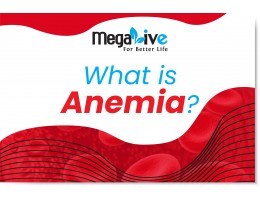
Anemia is a common blood disorder. It is a condition when the body does not have enough red blood cells and is unable to deliver enough oxygen throughout the body.
Anemia is diagnosed by a low haemoglobin or hematocrit level in a blood test. The main protein in red blood cells is haemoglobin. It transports and distributes oxygen throughout your body. Your haemoglobin level will be low if you have anaemia. If it falls below a certain level, your tissues or organs may not receive enough oxygen.
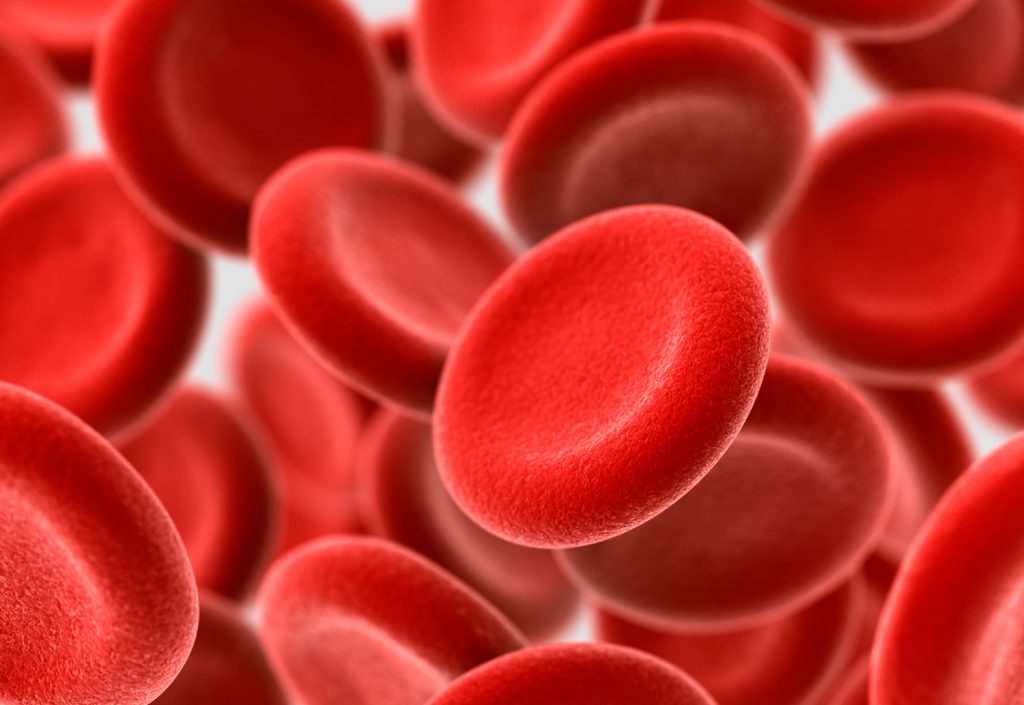
Symptoms of anemia
Lethargic or tiredness are the most common symptoms of anemia. Other symptoms include pale skin, an irregular or fast heartbeat, shortness of breath, chest pain, headache, and light-headedness.
Types of anemia
Among the types of anemia are sickle cell anemia, iron deficiency anemia, thalassemia, aplastic anemia, and many more.
Each of these types of anemia has its own cause.
In conclusion,
anemia must be treated depending on the cause, ranging from taking supplements to having medical procedures.
Most importantly, anemia can be prevented by consuming a healthy and varied diet.
Iron-rich foods include boiled cockles, chickpeas, fried soy bean curd, liver, dried anchovies, bitter gourd, spinach, and kangkung.

Iron is a mineral found in many proteins and enzymes that the body needs in order to stay healthy. Most of the iron in the body is found in haemoglobin, the pigment of red blood cells. Haemoglobin transports oxygen to all of the tissues and organs in the body. If there is an insufficient amount of iron in the blood, the amount of haemoglobin in the blood decreases too. This will reduce the oxygen supply to cells and organs.
During pregnancy, a haemoglobin level of 11 g/dl or above is considered normal. Between 3 to 6 months of pregnancy, a small drop of 10.5 g/dl is also considered normal. Lower levels of haemoglobin are usually due to a lack of iron (iron deficiency). Usually, the level of iron in the blood is measured in order to find out whether a low haemoglobin level is due to a lack of iron.
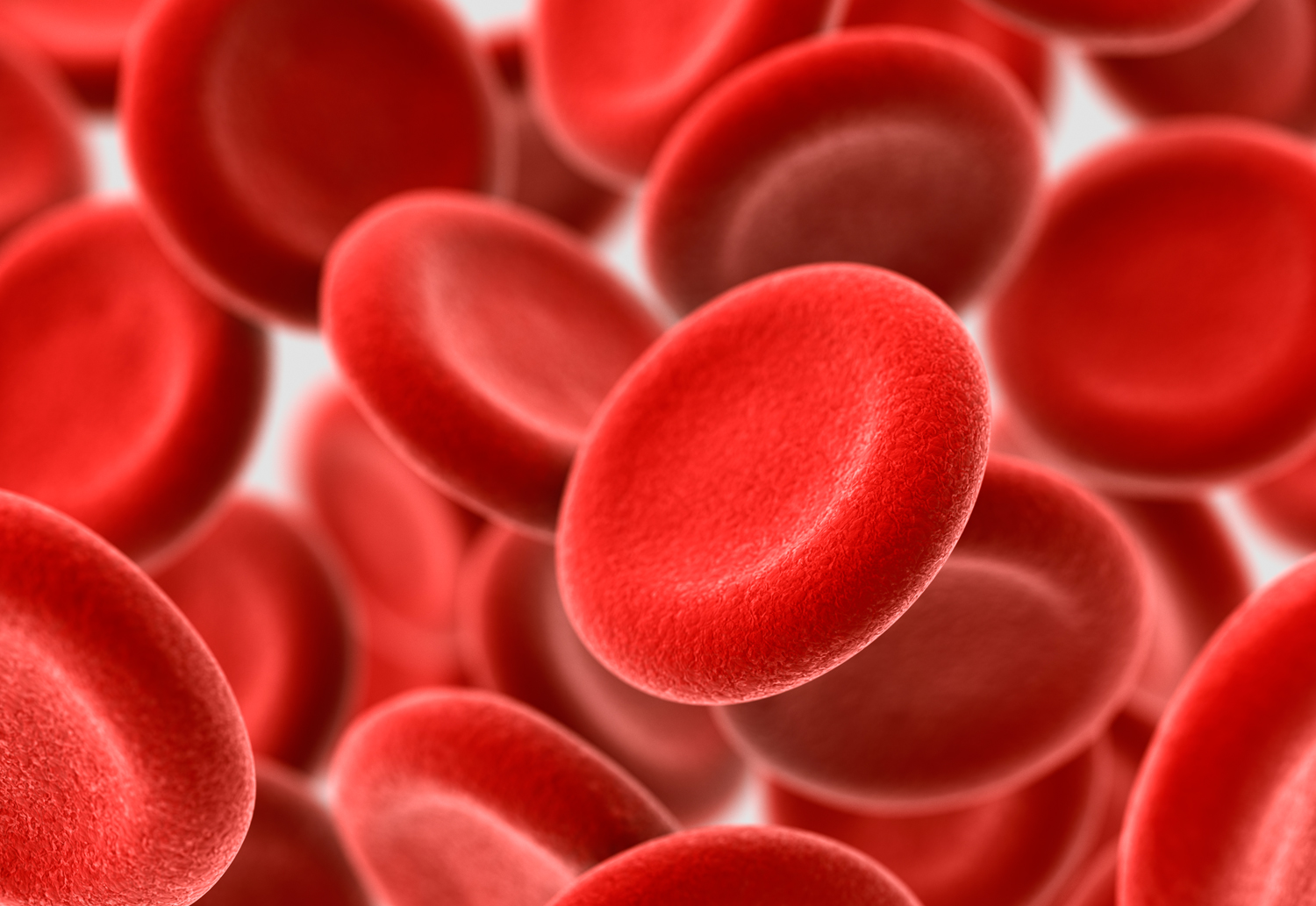
For a pregnant lady with a normal level of iron in her blood, it is not compulsory to consume an iron supplement; some people might consume it as a precautionary measure, but studies involving more than 40, 000 women show that there are no noticeable health benefits for the pregnancy or the baby. Although iron supplements were found to lower the risk of anaemia, they did not influence the number of preterm births, the number of babies with low birth weights, or infections in pregnant women.
However, it is important to know some of the examples of iron-rich foods that can be beneficial during pregnancy and for overall health, such as pistachios, sesame, rolled oats, whole grain rice and pasta, tofu, strawberries, tuna, shrimp, lettuce, chickpeas, peas, meat, and internal organs (liver).
In conclusion, we normally get iron from the food we eat. Meat has a lot of iron in it from haemoglobin in the animal’s body. The liver (internal organ) is particularly high in iron. Other than these foods, iron can be taken in the form of iron supplement too.
Reference:
1. Pregnancy and birth: Do all pregnant women need to take iron supplements? December 22, 2009. Last update March 22, 2018. National Library of Medicine. National Centre of Biotechnology Information. National Institute of Health (NIH).

References

Colostrum is a type of breast milk produced by mammals, including humans. Before breast milk is released, it is usually thicker in consistency and contains high levels of antibodies. This high concentration of nutrients in the colostrum is aimed at promoting the growth and health of newborn mammals, which is why it is the most nutritious form of milk (1).
For humans, the consumption of colostrum by newborns is very much encouraged; apart from the promotion of exclusive breastfeeding up to 6 months and 2 years by the Ministry of Health Malaysia (MOH), mothers are as well encouraged to give skin-to-skin support while breastfeeding newborns for the colostrum few hours after delivery.
The colostrum is said to have various benefits for the newborn as they get older (2).
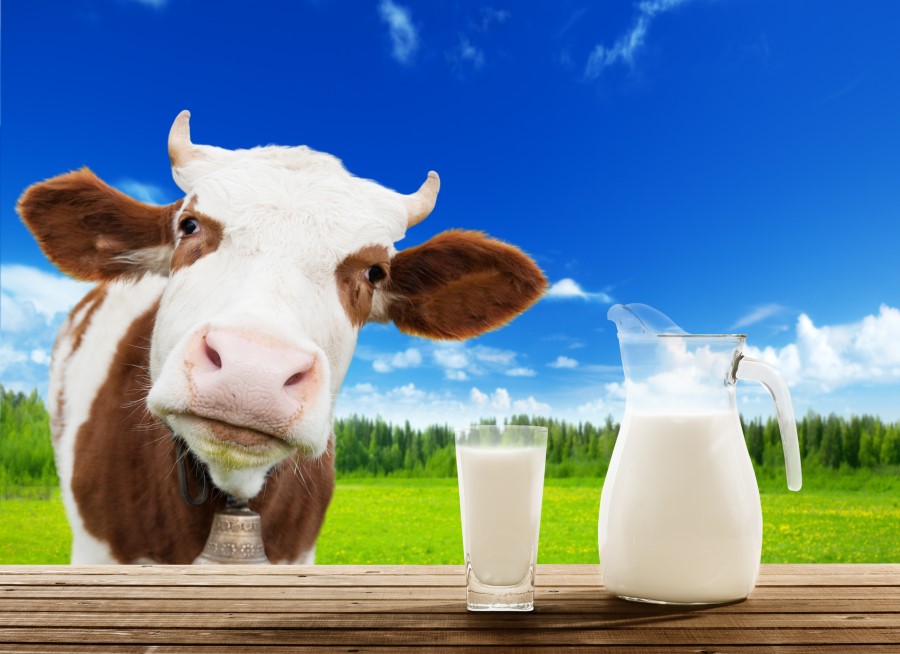
What about the adults? Does adult consumption of bovine colostrum have the same effect as mother-to-newborn colostrum?
Bovine colostrum is more nutritious than regular milk. It contains more protein, fat, carbohydrates, magnesium, and vitamins A, C, B, and E than regular milk. Due to this, studies have found that the consumption of bovine colostrum by adults is useful in boosting the immune system as well as improving gut health (1, 3).
The presence of lactoferrin in colostrum contributes to the link between colostrum and immunity. Lactoferin is a protein that occurs naturally in the body. It is a very versatile protein because it is a bi-lobed protein that can bind an iron atom (4). This transferrin-family iron-binding glycoprotein is an important component of the mammalian immune system. As a result, it provides lactoferrin with protective effects ranging from direct antimicrobial to anti-inflammatory and anti-cancer (4).
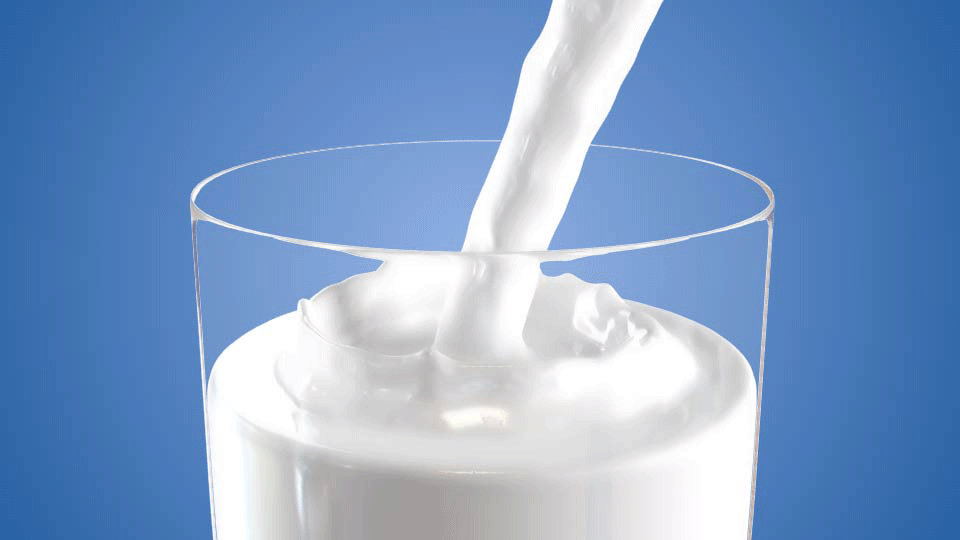
Apart from this, colostrum also contains antibodies. Antibodies are proteins, also known as immunoglobulins, used by the immune system to fight bacteria and viruses. Bovine colostrum is rich in the antibodies IgA, IgG, and IgM (1, 2). This is also essential for fighting pathogens and improving the immune system.
Since bovine colostrum is loaded with nutrients that fight disease and promote growth, it is able to boost immunity, treat infections, and offer more related benefits to humans throughout their lives. Thus, the consumption of bovine colostrum may have the same effect as human colostrum; it is just that the absorption of colostrum from a bovine to a human body is different, but with all the spectacular ingredients that colostrum possesses, it may possess the same effect as boosting immunity!
References

As schools reopen, children and parents are gradually returning to their routines, but it's crucial to ensure our children are equipped to maintain their health and well-being. In this article, we'll explore how proper nutrition and practical tips can bolster your children's immune systems and contribute to their overall well-being.
Before sending your children to school, instill in them the importance of basic protective measures:
Hand Hygiene: Remind your children to wash their hands thoroughly with soap and water or use an alcohol-based hand sanitizer. However, emphasize that they should wash their hands before eating instead of using sanitizer.
Respiratory Etiquette: Teach your children to cover their mouth and nose with their bent elbow when coughing or sneezing. Encourage them to dispose of used tissues immediately and avoid touching their eyes, nose, and mouth.
Social Distancing: Emphasize the significance of maintaining a safe distance of at least 1 meter from anyone who is coughing or sneezing.
Ensure your children stay hydrated throughout the day by:
Providing Water: Encourage your children to bring plain water to school. Water is the healthiest choice and helps maintain their overall health.
Incorporate Hydrating Foods: Apart from water, include foods with high water content in their diet, such as cucumber, tomatoes, spinach, and melon. Avoid sugary drinks like fruit juices, syrups, and fizzy beverages.

3. Opt for Healthy Packed Meals
Packing your children's meals has several advantages, including saving time and reducing their exposure to potentially contaminated surfaces at the school canteen. Focus on these guidelines for their meals:
Include Fruits: Incorporate fruits into their meals as they are easy to prepare and healthy. Toddlers need about 1 cup of fruit per day, while older children require 1.5 cups.
Add Vegetables: Mix vegetables with rice, pasta, or noodles in their bento boxes. The recommended daily intake varies by age and gender, but including a variety of colorful vegetables is essential for their health.
Protein: Ensure your children receive an adequate amount of protein, with fish, nuts (for those above 5 years old), and other protein sources.
Milk: Include three servings of milk or dairy products per day for children under 5. After 2 years, switch to semi-skimmed milk.
4. Gradually Introduce Healthy Foods
Introducing a variety of healthy foods to your children can be a rewarding journey. Here's how:
Step-by-Step Approach: Start by introducing one category of food per month. For example, focus on fruits in August and gradually expand their preferences.
Build on Favorites: Begin with foods your children already enjoy and then introduce variations within the same food category.
Consider Nutritional Supplements: If your children are picky eaters and you're concerned about their nutrition, consult a healthcare professional about appropriate vitamins and supplements. These can help compensate for any macronutrient and micronutrient gaps in their diet.
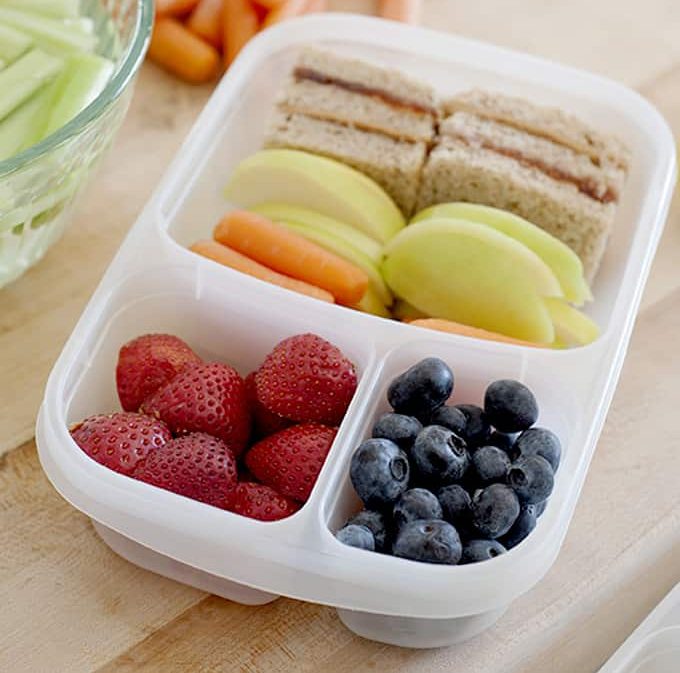
In conclusion, by following these guidelines and fostering healthy eating habits, you can help boost your children's immune systems and overall well-being, ensuring they have a healthy and happy school experience. Always consult with healthcare professionals for personalized advice on your children's dietary needs
References
World Health Organization (WHO). Feeding babies and young children during the COVID 19 Outbreak. http://www.emro.who.int/nutrition/nutrition-infocus/feeding-babies-and-young-children-during-the-covid-19-outbreak.html (Accessed in July 2020).
WebMD. 6 Vitamins and Minerals your kids need. https://www.webmd.com/health-insurance/features/family-vitamins#3 (Accessed in July 2020).
Harvard School of Public Health. Nutrition Insurance Policy: A Daily Multivitamin. https://www.hsph.harvard.edu/nutritionsource/multivitamin/ (Accessed in July 2020)
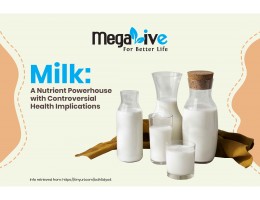
Milk is renowned as a nutritional powerhouse, often considered the food with the highest nutrient density, making it a natural dietary staple for infants from ancient times. This association continues to hold true, as milk is the preferred oral nutrition supplement for bedridden patients (1).
Nonetheless, the role of milk in adult diets remains a topic of debate. Some studies argue that daily milk consumption is unnecessary, while others advocate for its regular inclusion (1). Here, we present a breakdown of the considerations to help you decide whether daily milk intake is right for you.

Milk and Obesity
Despite the common perception that full-fat dairy products contribute to weight gain, research has revealed a contrary perspective. In fact, full-fat dairy products might be more effective in weight management than their low-fat counterparts. Walter Willet, a nutrition expert from Harvard School of Public Health, clarifies that the demonization of all fats emerged in the 1950s and 1960s when saturated fats were linked to high cholesterol and increased heart disease risk (2).
However, reducing saturated fat in food products or diets often leads to their replacement with sugars or carbohydrates. The downside to this substitution is that carbohydrates do not provide the same feeling of fullness as fats, causing increased food consumption (2). Some studies even suggest that the more sugar we consume, the stronger our cravings become, akin to an addiction (3).
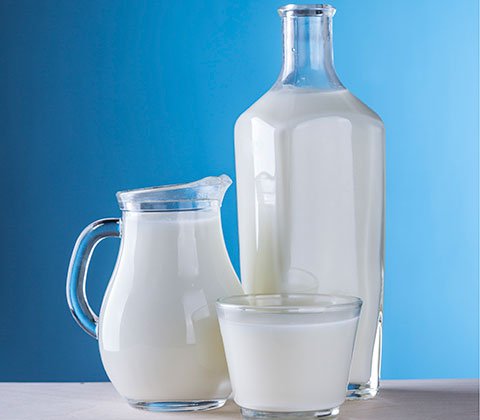
Modern Milk Dilemma
Modern milk options have evolved to cater to various preferences and dietary needs, from animal-based milk to plant-based alternatives. The variety of choices makes selecting the right milk a bit tricky, especially given the differing nutritional profiles.
Choosing the Right Milk
If your goal is to use milk to promote a sense of fullness and avoid excessive food intake, full cream milk is a suitable choice. However, be mindful of monitoring your overall calorie intake and opt for milk with lower sugar content. On the other hand, if you tend to obtain fats from other food sources, opting for low-fat milk is advisable while remaining vigilant about sugar content. In essence, prioritize milk with minimal sugar, saturated fat, and trans-fat content, as these components have been associated with various health complications.
Plant-based milk alternatives may not necessarily be healthier than cow's milk, as they could contain higher sugar levels. However, they are an environmentally friendly choice, with soy milk, almond milk, oat milk, and rice milk producing fewer carbon emissions and greenhouse gases compared to cow's milk.
Pros and Cons of Milk
The decision of whether to incorporate milk into your daily diet remains a subject of debate. Factors such as your dietary intake and body weight play a pivotal role in determining the daily milk consumption that suits you. For individuals with normal weight, one glass of milk per day may suffice, while those who are underweight might consider upping their intake to two glasses. Yet, it is essential to balance the intake of beneficial fats from milk with the reduction of harmful fats from sources such as deep-fried foods, foods high in trans-fats, and those with high saturated fat content.
In Malaysia, where a significant portion of the population is overweight or obese, reconsidering daily milk consumption may be prudent. The key is to ensure you meet your daily calcium requirements, which can also be obtained from alternative sources like anchovies, sardines, almonds, kale, and various other foods (5,6).
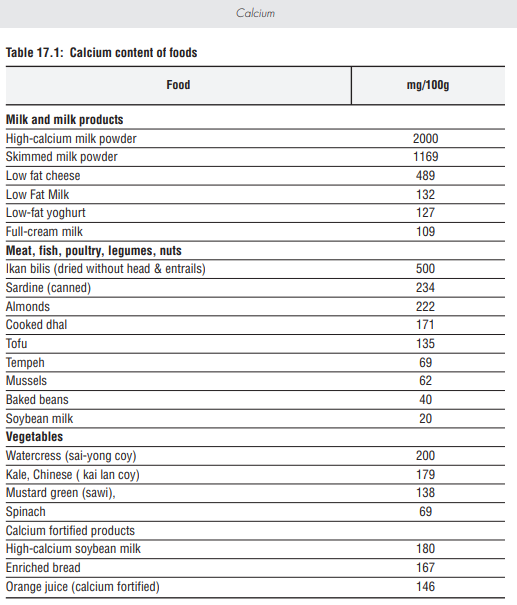
Fact Check (5,6)
Saturated fat is often high in animal-based and certain plant-based foods, such as coconut milk (santan). Excessive intake is linked to elevated blood cholesterol levels and an increased risk of heart disease. Notably, many coconut milk products claim to be cholesterol-free, despite containing high levels of saturated fat.
Trans fat is a man-made fat produced through hydrogenation, which raises bad (LDL) cholesterol and lowers good (HDL) cholesterol levels. Consuming trans fats increases the risk of heart disease, stroke, and type 2 diabetes. Examples of foods that may contain trans fats include doughnuts, cookies, crackers, muffins, pies, fast food, and cakes.
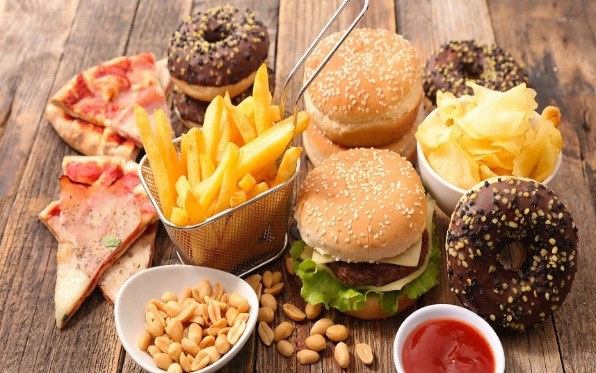
References
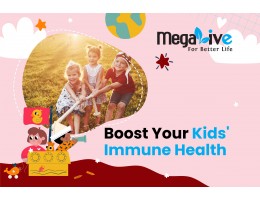
Fighting germs does not technically boost immunity, but it is a great way to reduce stress on your child’s immune system. Make sure your children wash their hands often (with soap) especially before and after using toilet, before and after meals, after playing outside, arrive home from day care, handling pets, or blowing their nose. To cultivate the habits, you may also let them pick up their own choice of handkerchief, soap, and scents!
You must also always make sure that your hands are clean before you touch them!
Whenever you are bringing them outside make sure you carry antibacterial disposable wet wipes with you for your quick clean ups. Oh, you may also practice to let your children wear face shield if you are outside or in public area if they cannot wear mask yet! Make sure to sanitize or clean the face shield frequently and keep it properly as well!

Another key germ busting strategy according to health professionals is whenever your child is sick throw away their toothbrush as the germs from outside or from the toothbrush can hop from toothbrush to toothbrush infecting other family members. If it is a bacterial infection, such as strep throat, your child can reinfect themselves with the same germs that got them sick in the first place. In that case, tossing the toothbrush protects both your child and the rest of your family.
It is normal for kids to dislike healthy foods if the parents dislike it, or rarely consume it! If you feel like your children eating habit are more into unhealthy habit check back your food preference most of the times it is a reflection!
Try to eat healthily as much as you can, make sure that every main mealtime there is vegetables and fruit serve for your whole family, it can be just a simple blanched carrot and broccoli, or it can be stir fried vegetables or it can be simply raw salad with dressings! If your children are okay with consuming vegetables and fruits in every main mealtime, start introducing healthy snacks using fruits and vegetables as well.
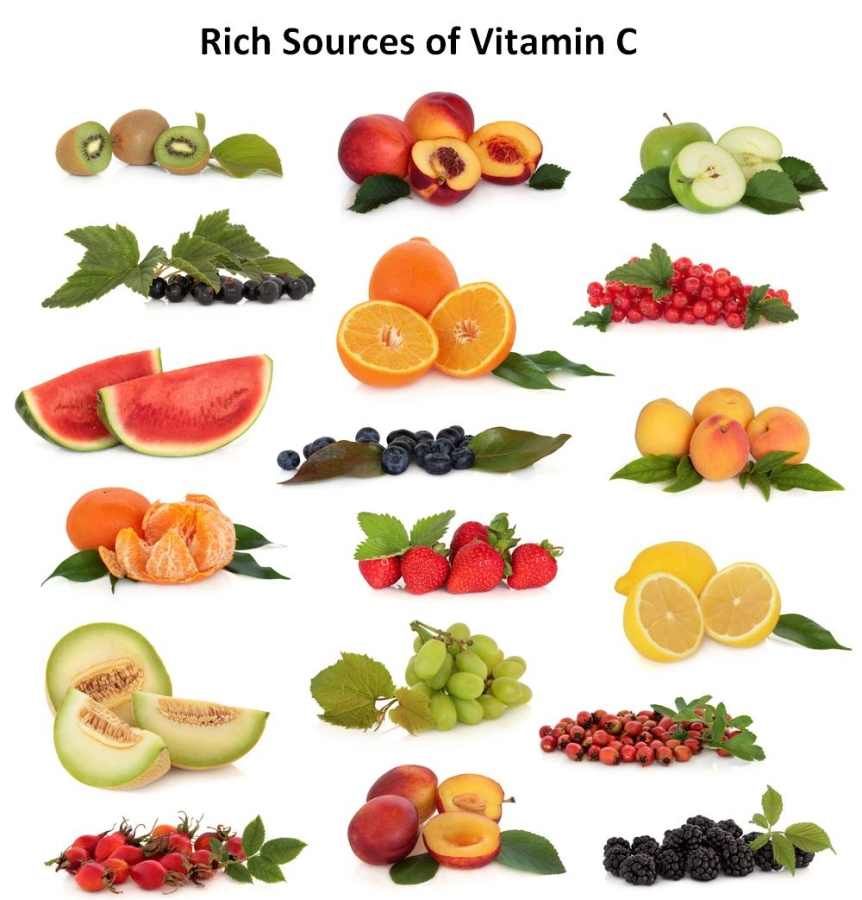
They may eat cakes, biscuits, and dessert occasionally still! If your children are still below 6 months young, try to breastfeed them as much as you can, as breastmilk has naturals antibody which is passed from mothers to baby which is beneficial for children during this pandemic situation.
Apart from vegetables and fruits, consuming yogurt which contains high amount of probiotics and prebiotics also helps with immune health.
Studies show that sleep deprivation make individuals more susceptible to illness by reducing natural killer cells (immune-system weapons that attack microbes and cancer cells). Required sleeping hours for children is vary according to their age, but on average children need to nap during the day for at least one hour and sleep throughout the night for at least 10 hours.
Try to help your children into having a fixed routine helps with their sleeping time. Try to tone down screen time and makes them do a lot of physical activity in the evening also helps with sleeping earlier during the night. Children who does not nap during the day may sleep even earlier at night according to expert, but still nap is important for children, which is why try to cultivate habits which makes them easier to nap during the day. This will not only be beneficial for their immunity but as well as for their growth and development.
References.
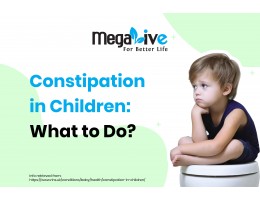
Constipation is common among children. As parents, you may notice that your child has constipation if:
Their poop is large and hard; it looks like rabbit droppings or little pellets.
They are straining or in pain when they poop.
They may have some bleeding during or after pooping because their poop is hard.
Another sign to look for is when a child has a poor appetite or stomach pain that improves after they poop. Soiled pants are one of the symptoms of constipation in children aged one and up, as runny poop may leak around the hard constipated poop. This is called overflow soiling.
Constipation is common in toddlers aged 2 to 3 years old, according to health professionals. This is because usually at this age, parents start to potty train their children, which makes them feel uneasy about the whole poop situation.
Here are some tips that you may try to prevent your child from experiencing constipation or to help them while they are constipated.
Make sure they drink plenty of fluid. Most of the time, children are unable to tell you if they are thirsty, especially if they are merely 1 year old. One of the tips that we can practice is to always make sure their sippy cup is full and within their reach so that it will be easier for them to drink water whenever they want. Sometimes children are so occupied with playing that they do not drink water, so it is best to remind them every few hours to drink water.
Consume a high-fiber diet. This means to load your child's plate with plenty of fresh fruits and vegetables, high-fiber cereals, whole-grain breads (look for at least 3-5g of fiber per serving), and a variety of beans and legumes, such as lentils and chickpeas. One of the good sources of fiber that children love most is popcorn (but prepare it with the minimum amount of sugar, butter, and salt). You may also let them prepare their own popcorn or fruit salad; this will even stimulate their appetite, and of course they will learn and enjoy the process. Foods containing probiotics, such as yogurt, can also promote good digestive health.
Doing a lot more physical activity. Sedentism can also be detrimental to bowel movements. Children under the age of five require at least three hours of physical activity per day. So, let them move around, let them jump and climb, but keep in mind that all of this must be monitored and done in a safe environment, especially for young toddlers.
Regular toilet time. This is especially true for children who are undergoing toilet training. Encourage your child to use the toilet first thing in the morning and after every meal or snack. Set a timer for every 30 to 45 minutes to take them to the bathroom. Instead of suggesting, "Do you need to go to the bathroom?" simply say, "Time to go to the bathroom now." Having regular toilet time also means helping them have regular time for everything else, such as their mealtimes and their naps. This will also help them easily adapt to this new habit of going to the toilet whenever they feel the urge.
Stool softener to clear the bowels. These are safe for children, but they need to be used under the supervision of a doctor or pharmacist. A common mistake when it comes to using stool softener is that parents tend to stop using it after their child has their first normal-looking bowel movement, but stopping too soon may just set your child up for another episode of constipation. So, what you can do is talk to your doctor; it is okay to let your child stay on stool softener for a few weeks. At the same time, try your best to cultivate lifestyle and dietary changes that can improve your child's bowel movements.
In conclusion, always try to monitor your child's bowel movements so you may notice any changes, especially if they are under 2 years old, as they cannot verbally tell what is going on in their body or if they are in pain. Noticing it early will allow you to better prepare to assist them in relieving their bowel condition than if it is already chronic. Also, if it has been too long already or if your child is in pain whenever you press their abdomen (to this extent), it is best to seek advice from a doctor regarding your child's condition.
References.
National Health Service (NHS) U.K. Constipation in children. https://www.nhs.uk/conditions/baby/health/constipation-in-children/ (Accessed on April 1, 2021).
National Institute of Diabetes, Digestive and Kidney Disease (NIDDK). U.S Department of Health and Human Services. Symptoms and Causes of Constipation in Children. https://www.niddk.nih.gov/health-information/digestive-diseases/constipation-children/symptoms-causes (Accessed on April 1, 2021).
Mayo Clinic. Constipation in Children. https://www.mayoclinic.org/diseases-conditions/constipation-in-children/symptoms-causes/syc-20354242#:~:text=Constipation%20in%20children%20is%20a,constipation%20in%20children%20are%20temporary. (Accessed on April 1, 2021).

Pertubuhan Kesihatan Dunia (WHO) telah mewartakan bahawa merokok merupakan risiko yang spesifik bagi komplikasi COVID-19 (1,2). Hal ini adalah kerana, jika virus korona menyerang tubuh badan individu yang merokok, peratus untuk individu tersebut pulih lebih rendah berbanding dengan individu yang tidak merokok manakala peratus untuk individu tersebut untuk mengalami kegagalan paru – paru yang serius pula adalah tinggi.
Umum mengetahui, COVID-19 adalah virus yang menyerang sistem pernafasan, jadi, individu yang merokok atau yang mempunyai masalah pernafasan dan/atau sakit – sakit kronik yang lain seperti masalah jantung, buah pinggang, kencing manis dan lain -lain jika terdedah kepada virus ini, mempunyai sebanyak 80.7% risiko kematian berbanding individu yang tidak menghidapi penyakit kronik (3).
Statistik juga menunjukkan bahawa, warga emas yang berusia 60 tahun ke atas mempunyai lebih 62.6% risiko kematian jika terdedah kepada virus ini berbanding individu berusia 60 tahun ke bawah (3). Lebih menakutkan lagi, jika individu yang berusia 60 tahun ke atas, dan mempunyai sejarah penyakit kronik terdedah kepada virus ini, risiko menghadapi kematian adalah sangat tinggi berbanding dengan individu yang yang berusia kurang dari 60 tahun dan tidak mempunyai sejarah penyakit kronik.
Tabiat merokok itu sendiri yang menyebabkan individu berisiko terdedah kepada pelbagai jenis komplikasi kesihatan, akan tetapi sebelum ini mungkin perokok menghadapi kesukaran untuk berhenti merokok disebabkan faktor rakan sekeliling, tekanan kerja dan sebagainya. Akan tetapi oleh kerana dunia diancam dengan wabak COVID-19, individu yang merokok mempunyai lebih sebab untuk berhenti merokok kerana anda mempunya risiko yang lebih tinggi terdedah kematian jika terdedah kepada virus ini.
Antara cara untuk berhenti merokok, yang telah dikumpulkan oleh Pengkalan Data Cochchrane Edisi Istimewa, mengenai cara – cara berhenti merokok adalah dengan menggunakan terapi kombinasi, iaitu penggunaan ubat dan juga sokongan moral (4).
Penggunaan Ubat – Ubatan seperti Nicotine Replacement Therapy (NRT) telah digunakan sebagai salah satu cara untuk berhenti merokok sekian lama. Terapi ini adalah bagi tujuan untuk menggantikan kebergantungan perokok kepada nikotin dan seterusnya menggurangkan motivasi perokok untuk terus merokok. Ia juga membantu mengawal kesan sampingan berhenti rokok/ kurang merokok (4).
Nicotine Replacement Therapy (NRT) ini memberikan nikotin dalam dos yang rendah kepada perokok tanpa apa apa bahan merbahaya yang lain seperti yang terdapat di dalam rokok. Terdapat pelbagai jenis Nicotine Replacement Therapy (NRT) dipasaran, iaitu sama ada dengan menggunakan gula getah nikotin (nicotine gum), ‘nicotine inhaler’, ‘nicotine lozenge’, ‘nicotine patch’ atau ‘nicotine nasal spray’. Kesemua jenis produk ini mempunyai dos, cara, dan kekuatan yang berbeza (5).
Produk bagi terapi nikotin telah direka dengan pelbagai jenis mekanisma untuk penyerapan dan perembesan nikotin di dalam badan. Sebagai contoh bagi gula getah nikotin, inhaler nikotin, lozenge nikotin dan nasal spray nikotin, ia memberi kesan kepada otak dengan lebih cepat berbanding nicotine patch akan tetapi mempunyai proses perembesan yang lebih lambat berbanding merokok (5). Nicotine patch pula merembeskan dos nikotin secara perlahan – lahan dan secara pasif, oleh kerana itu terapi nicotin patch biasanya digunakan bersama produk yang lain.
Kepelbagaian produk bagi membantu perokok berhenti merokok memberikan perokok beberapa pilihan untuk berhenti merokok dengan kaedah yang paling sesuai, berdasarkan kekerapan perokok merokok dan kebergantungan perokok kepada rokok tersebut (4,5). Kesemua produk ini berkesan jika digunakan mengikut kesesuaian terhadap tahap aktiviti merokok seseorang individu. (5).
Selain daripada penggunaan ubat – ubatan, terdapat beberapa langkah yang biasanya disyorkan oleh Kementerian Kesihatan Malaysia (KKM), iaitu yang pertama ialah dengan membaca atau mendapatkan informasi mengenai bahaya rokok dari sumber yang sahih, berkenaan bahaya merokok dan kelebihan berhenti merokok.
Terdapat banyak kelebihan berhenti merokok kerana merokok memberi banyak keburukan kepada diri sendiri dan orang sekeliling terutama ahli keluarga, sebagai contoh kanak – kanak yang selalu terdedah kepada asap rokok atau asap rokok basi akan lebih sering sakit seperti batuk – batuk, selsema serta jangkitan telinga, hidung dan tekak. Merokok juga boleh membuatkan paru – paru lemah dan penyakit seperti asma (6).
Selain daripada aspek kesihatan bagi orang yang tersayang, merokok juga boleh menyebabkan anda mendapat pelbagai jenis penyakit seperti, kanser paru – paru, penyakit paru – paru yang kronik, strok dan ulser di bahagian bawah lapisan kulit perut. Individu yang merokok juga mengikut statistik mati lebih awal, kerana statistik menunjukan satu dari dua orang perokok mati disebabkan penyakit berkaitan merokok (6).
Tabiat berhenti merokok juga dapat menjimatkan wang, labur wang anda berbanding membeli rokok sebagai contoh
Wang untuk membeli rokok = RM5.00/sehari
Sebulan = RM 150.00
Setahun = RM 1800.00
Jika anda melabur untuk 10 tahun, anda sudah mempunyai RM18,000.00 dalam akaun simpanan anda) (6).
Selain, Ia juga dapat melindungi alam sekitar – Puntung rokok dibuang oleh perokok boleh menyebabkan kebakaran (6).
Terdapat pelbagai kaedah untuk berhenti merokok. Faktor yang paling penting adalah keinginan anda untuk menjadikannya satu kenyataan. Mula dengan menetapkan tarikh untuk berhenti merokok dan pastikan tarikh tersebut boleh dicapai. Dalam pada masa yang sama, anda mesti yakin dengan keupayaan diri untuk berhenti merokok. Katakan pada diri anda “saya bukan perokok” Ulang beberapa kali sehingga menjadi semangat untuk berhenti merokok. Sentiasa berfikiran positif dan dapatkan sokongan daripada orang sekeliling.
Teknik berhenti merokok yang paling selalu digunakan dan disyorkan oleh Kementerian Kesihatan Malaysia (KKM) ialah dengan mengamalkan Teknik 12M (6).
1. Melengah – lengahkan
Sebagai contoh jika anda terasa seperti mahu merokok, lengah – lengahkan tabiat tersebut seperti tunggu 5 minit atau katakan kepada diri sendiri sebentar lagi “saya akan merokok”.
2. Menarik Nafas Panjang
Tarik nafas 3 kali secara perlahan-lahan. Ulangi perkara yang sama sehingga hilang rasa untuk merokok.
3. Minum air
Anda juga boleh mencuba untuk minum air masak bagi mengalihkan perhatian anda dari tertumpu kepada ketagihan rokok.
4. Menyibukan diri
Buat sesuatu bagi mengalih fikiran untuk melupakan rokok. Buat perkara yang dapat mengalihkan tumpuan anda seperti bersenam atau bermain permainan video.
5. Menjauhkan diri daripada perokok
Oleh kerana musim PKP ini adalah masa yang terbaik untuk berhenti merokok. Anda boleh menjauhkan diri anda dari rakan – rakan dan ahli keluarga yang merokok, gunakan masa yang ada untuk bersama keluarga tersayang.
6. Mengelakkan diri daripada suasana atau situasi yang mendorong kepada merokok
Seperti keadaan berseorangan tanpa berbuat apa – apa (keadaan bosan) atau keadaan tertekan.
7. Mengunyah sesuatu seperti gula getah atau buah-buahan.
Mengunyah dapat membuatkan rongga mulut sibuk dan mengalihkan perhatian dari ketagihan rokok. Elakkan makanan yang manis kerana ia memberi risiko kepada penyakit – penyakit kronik yang lain pula.
8. Membasuh tangan selalu
Membasuh tangan dengan kerap juga dapat menghilangkan ketagihan kerana kita telah mengalihkan perhatian kita daripada keinginan untuk merokok.
9. Mandi dengan kerap
Mandi dengan kerap menyebabkan badan menjadi segar dan dapat melupakan ketagihan yang di alami, seketika.
10. Meregangkan otot
Senaman yang atau regangan otot apabila ketagihan untuk merokok datang dapat menghindarkan diri dari merokok.
11. Meditasi
Meditasi menyebabkan kita ingat kembali sebab – sebab untuk kita berhenti merokok dan boleh membangkitkan kembali semangat kita untuk berhenti merokok.
12. Memohon doa
Memohon doa agar rasa ketagihan dihilangkan dan dipermudahkan urusan untuk berhenti merokok seperti dihindarkan dari perkara – perkara yang boleh menyebabkan keinginan untuk merokok untuk kembali.
Selain daripada langkah - langkah yang telah disyorkan anda juga boleh mendapatkan maklumat yang lebih lanjut di laman sesawang KKM. Terdapat banyak bahan – bahan rujukan cara untuk berhenti merokok yang boleh di muat turun di laman sesawang yang sahih seperti di Portal MyHealth Kementerian Kesihatan Malaysia (KKM)(5). Selain dari bahan – bahan sokongan yang boleh di muat turun, terdapat juga nombor QuitLine yang boleh dihubungi di nombor 03-88834400 bagi keterangan lanjut mengenai cara berhenti merokok dari kaunselor berhenti merokok atau layari laman web jomquit.moh.gov.my (4,5).
Rujukan
The Star. Stub It Out Now, Smoking and Added Health Risk for COVID19. https://www.thestar.com.my/news/nation/2020/04/13/effective-ways-exist-to-quit-smoking-while-under-mco (Diakses 17 April 2020).
The Star. Smokers face high infection rate. https://www.thestar.com.my/news/nation/2020/04/13/smokers-face-higher-infection-risk (Diakses 17 April 2020).
Ketua Pengarah Kementerian Kesihatan Malaysia (KKM). From the desk of the Director General of Health Malaysia. https://kpkesihatan.com/2020/04/16/kenyataan-akhbar-16-april-2020-situasi-semasa-jangkitan-penyakit-coronavirus-2019-covid-19-di-malaysia/ (Diakses 17 April 2020)
Cochrane. COVID-19 Resources. https://www.cochrane.org/news/special-collection-effective-options-quitting-smoking-during-covid-19 (Diakses 17 April 2020)
Portal Rasmi My Health Kementerian Kesihatan Malaysia. http://www.myhealth.gov.my/en/nicotine-replacement-therapy-nrt/ (Diakses 17 April 2020)
Info Sihat. Bahagian Pendidikan Kesihatan. Kementerian Kesihatan Malaysia (KKM). https://www.infosihat.gov.my/index.php/isu-semasa/42-tips-berhenti-merokok (Diakses 17 April 2020)

We breathe in and out about 22,000 times a day. When resting, an average adult breathes about 12–20 times per minute. Though it looks small inside our body, when the lung is spread out, its size is actually about half the size of a tennis court. It has 2400 km of airways and up to 500 million alveoli (places where oxygen exchange occurs in the lung). Our lung is very unique in such a way that, though it has left and right sides, both of these are not entirely identical; the left lung is smaller than the right lung, and the left lung has only two lobes while the right lung has three (1).
Amazing, isn’t it? Starting today, let's not take the lung for granted. Now, it is time to find out how to breathe life into the lung.
Smoking and your lung health (2,3)
Among the things that you can start to cultivate in order to take care of your lungs is to stop smoking if you are a smoker. Though it is easier said than done, there are thousands of people who have successfully quit smoking with the correct guidance, motivation, and support. Above all, you must first recognise the factors that influence you to smoke and start to tackle them. As for addiction, it is something that can be worked out with patches, medication, support from your loved ones, and a conducive environment. If you are a passive smoker, it is time for you to take charge of your life. It is time to be stern if the smoker is one of your loved ones; provide them with some rules and regulations for smoking; and if it is in public, avoid places where you know smokers will be there. Remember, you’re saving your lung while doing so!
If you are a passive smoker or you are currently smoking and have yet to quit, you may consider supplements to take care of your lung health while trying to quit smoking. A herbal supplement such as tiger milk mushroom is suitable for smokers, people with breathing problems like cough and cold, senior citizens with weak hearts, and those who are always exposed to harmful smoke, like passive smokers.

Exercise or simply move (4)
Exercise can also help make sure your lung health is tip top! Exercise can be considered any kind of physical activity. It can be structured or planned exercise or simply your daily chores, which require you to move your body and sweat out. With the correct exercise that requires your cardiovascular conditioning, or simply put, exercise that involves your heart and lungs to pump the blood even quicker and to breathe in and out at a much quicker pace, it is considered aerobic exercise or moderate exercise. This includes activities like brisk walking, swimming, running, and cycling. All these activities, if done correctly, will improve your lung capacity, which is good for your lung health as well.

Stay indoors and avoid harmful pollution (3)
Nowadays, with our current transportation system in Malaysia, it is very likely for us to inhale bad air into our lungs. What you can do with regards to this is avoid heavy traffic and clean your house regularly to avoid the buildup of mold, dust, and allergens. You may ventilate your house and workplace frequently as well, so they have a good air circulation system inside. One of the smart ways that you can do before you plan your journey is to check the air quality of the place that you plan to go.
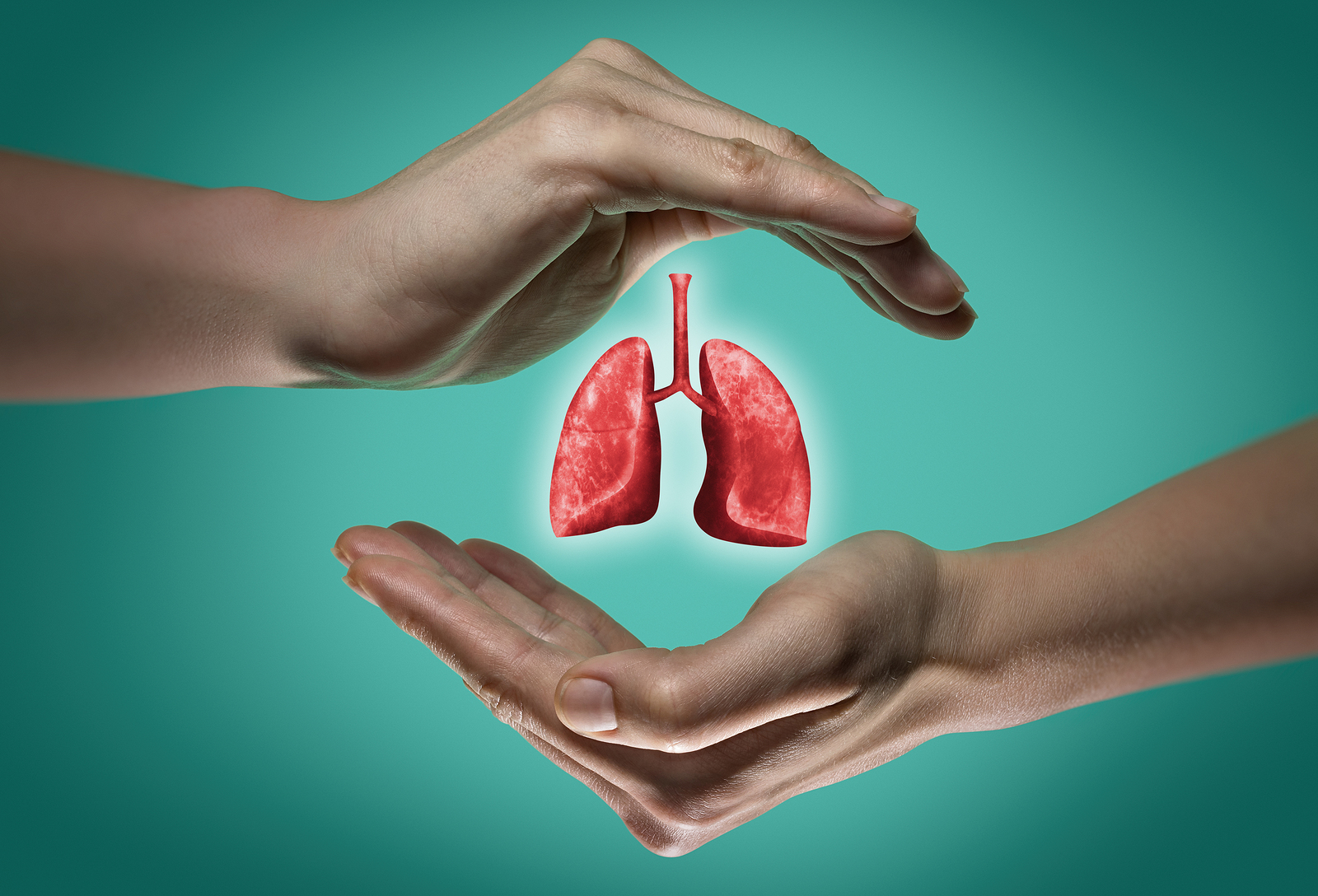
Prevent infection (3,5)
As for infection related to the lung, it can be due to various reasons, but one thing you can do to decrease your risk of getting infected is by frequently washing your hands. Do not touch your face with unwashed hands. Some people even consider getting the flu vaccine. Talk to your doctor to find out whether you should get a flu vaccination.
In conclusion,
It is easy to actually value your lung's worth and take care of it if you are living a mindful life. A simple activity like opting to use stairs instead of an elevator or lift can also benefit your lung. Avoid places with heavy traffic and wear proper personal protective equipment when handling hazardous or harmful chemicals. Making sure your house is properly ventilated can improve indoor air quality. Start now to take care of your lung, or you will regret it!
References
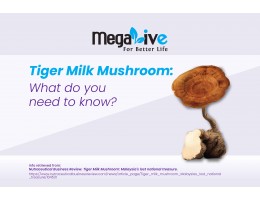
Lignosus rhinoceros, or its common name, Tiger Milk Mushroom, has been used since ancient times. It is very precious due to its rarity, since it grows in isolation. Within the same 5km radius, you will not find another stalk of Tiger Milk Mushroom. Another reason is that the medicinal properties of Tiger Milk Mushroom are only found in the underground tuber; if you find it at the stage where it has already sprouted out from the ground with a stem and cap, the active compound inside it may have already diminished. Tiger Milk Mushroom, also known as ‘Cendawan Susu Harimau, got famous after the former Prime Minister, Tun Dr. Mahathir Mohamad, said his chronic cough stopped after he consumed Chinese medicine derived from Tiger’s Milk Mushroom at the opening of the International Convention on Biotechnology in 2002 in Kuala Lumpur (1, 2).
Just as its name implies, folklore tales and Indigenous people believe that the mushroom grows whenever drops of tiger’s milk fall to the ground. The mushroom grows on soil deep in the tropical jungles; they thrive in areas with humidity levels over 80% and grow mainly in Genting Highland and Kuala Lipis in Pahang and in Perak (3).
Tiger Milk Mushroom and its Benefits
The tiger milk mushroom consists of three parts: its cap (pileus), stem (stipe), and tuber (sclerotium). The sclerotium is a compacted mass of fungal mycelium containing food reserves, while the cap and stem are woody. The sclerotium, or tuber, is the part where most of its medicinal properties are stored. The sclerotium is white and yields a milk-like solution that tastes like milk (3).

Since ancient times, tiger milk mushrooms have been used by the indigenous community in Malaysia to treat common colds, coughs, flu, and asthma. A study on rats with asthmatic symptoms found that the usage of tiger milk mushroom extract can improve asthmatic rats TH2 cells, which are important in producing Immunoglobulin E (Ig E). IgE is the antibody that will help to recognise a foreign body or allergen that will cause a reaction in the body and chase it away (3).
Tiger milk mushroom is also found to have some natural anti-coagulant properties. Anticoagulant properties are important during thrombolysis treatment. Thrombolysis is the treatment that is used to dissolve blood clots, either in the brain or an artery. Some of the natural anticoagulant and fibrinolytic agents are also used to treat thrombolytic conditions. Certain studies also found out that ‘wood ear fungus’ (a type of mushroom) is able to produce protease-like fibrinolytic enzymes, which could serve as thrombolytic agents to dissolve blood clots. Since the study found out that tiger milk mushroom also has the same protease enzyme, with this property demonstrated by tiger milk mushroom, it is presumed that it is able to be used for cardiovascular diseases (3).
There are also studies showing the comparison between wild tiger milk mushrooms and cultivated tiger milk mushrooms for their antioxidant properties. The study found that both wild and cultivated tiger milk mushroom extracts are able to scavenge free radicals; hence, it was concluded that they have anti-cancer properties, though the nutritional content of wild and cultivated tiger milk mushrooms differs (4). Wild tiger milk mushrooms contain more insoluble fibre and soluble fibre as compared to cultivated tiger milk mushrooms; cultivated tiger milk mushrooms also have more carbohydrate as compared to wild tiger milk mushrooms (4).
In conclusion…
There are many other studies on tiger milk mushroom, and it is found that it can give various health benefits to the human body; however, as tiger milk mushroom is a herb-based ingredient, its effects may differ from individual to individual, and some individuals may have different experiences with it. The takeaway message with regards to taking tiger milk mushroom supplements is that they have to go hand in hand with healthy lifestyles, such as exercise, since the symptoms you are experiencing need to be alleviated with lifestyle modifications such as exercise and stop smoking as well.
References